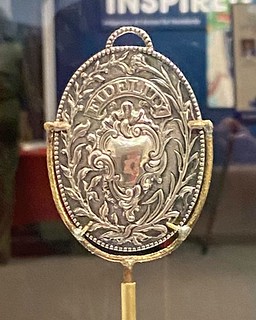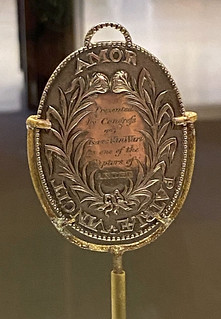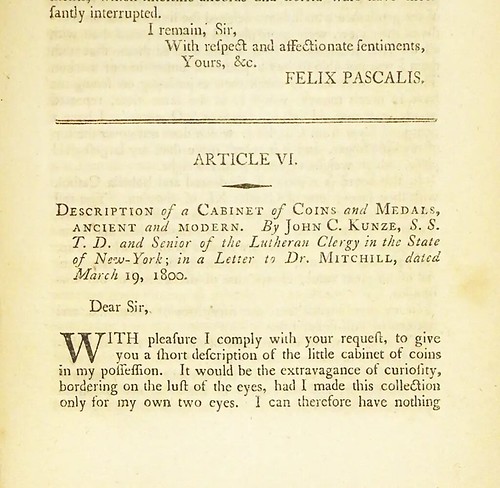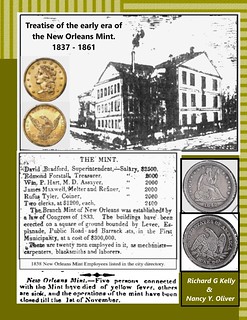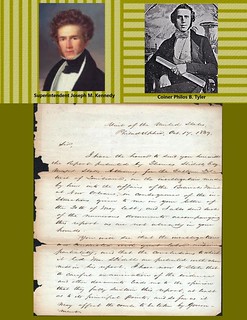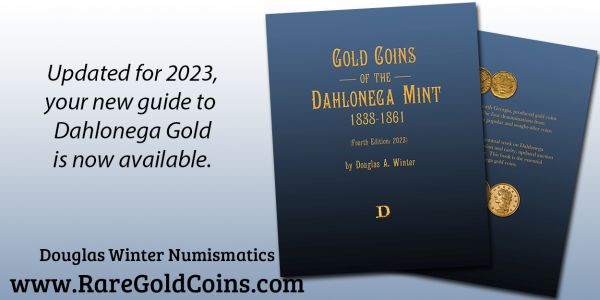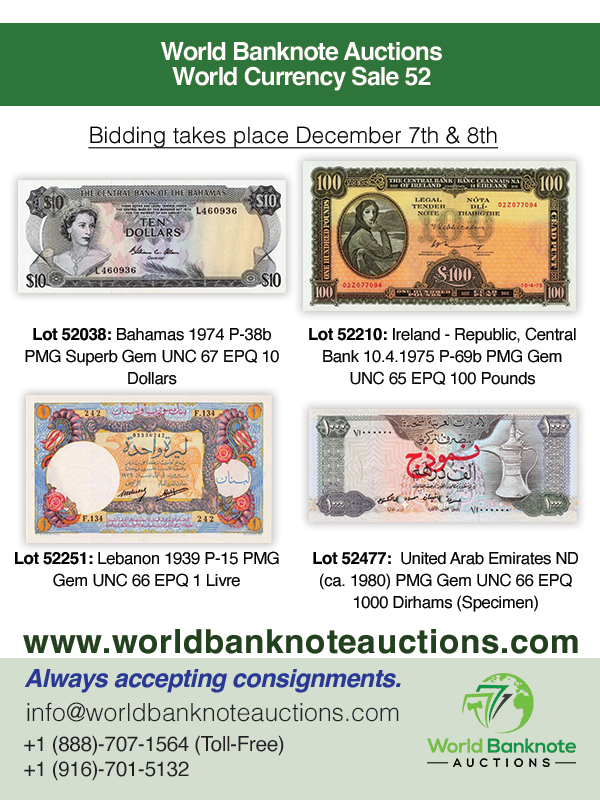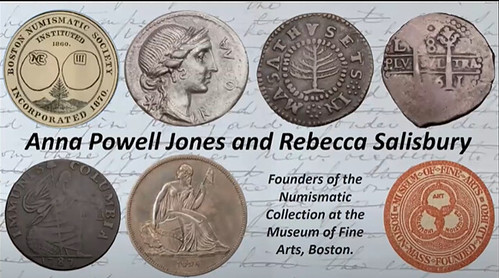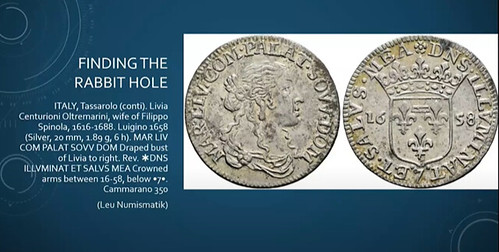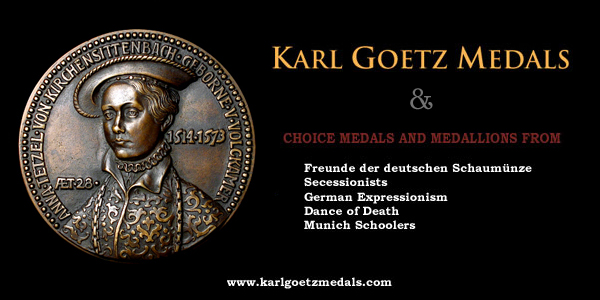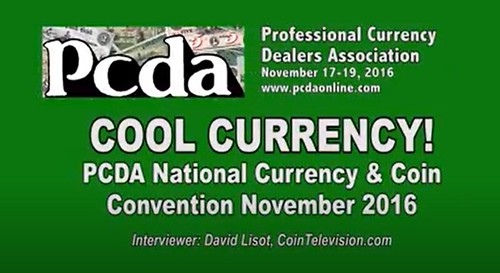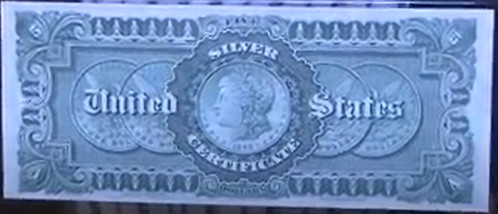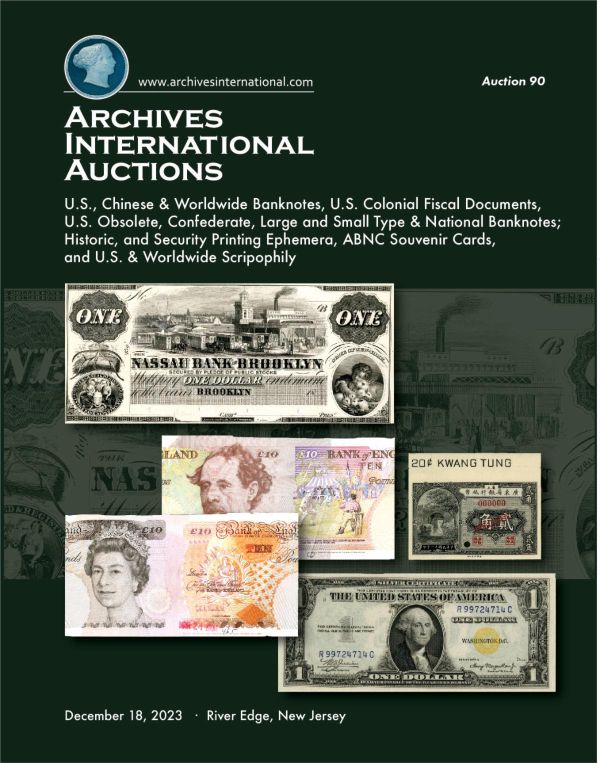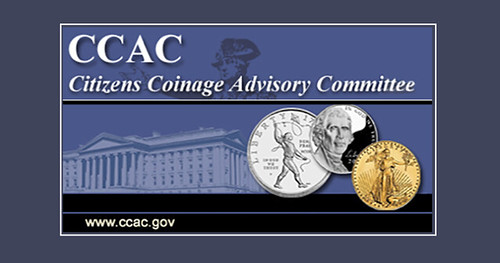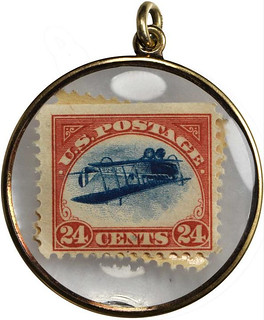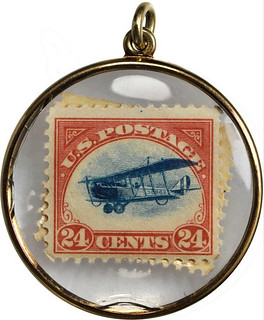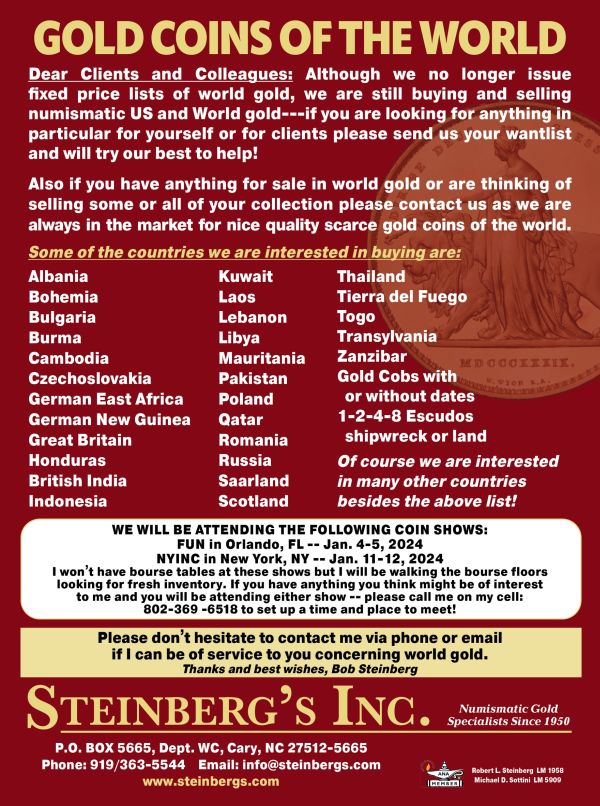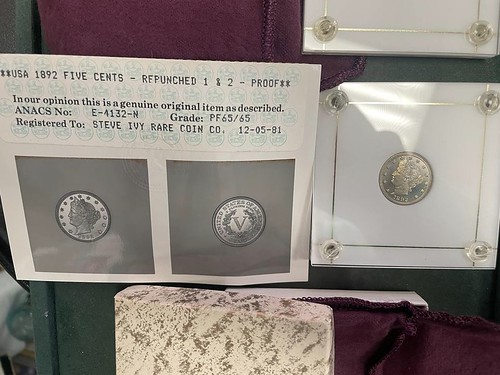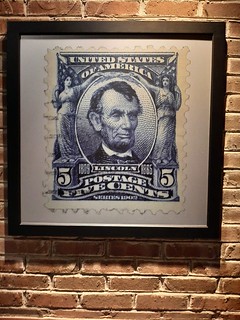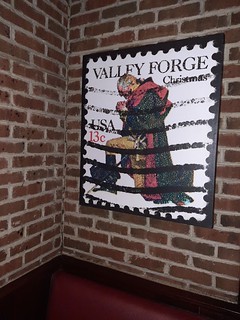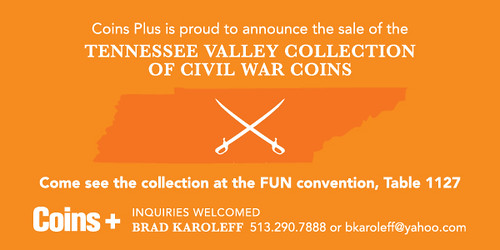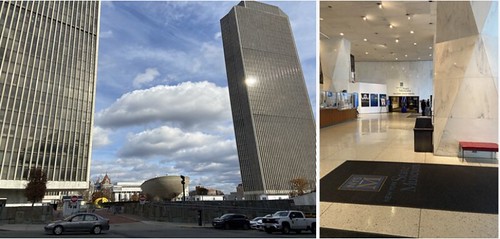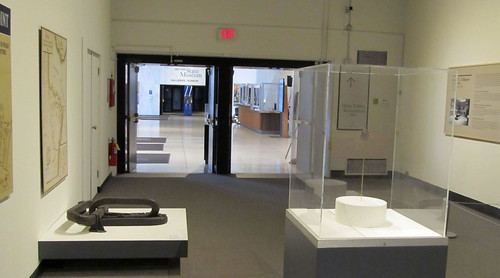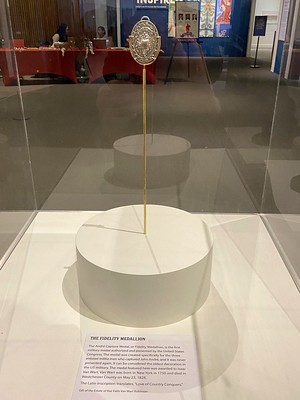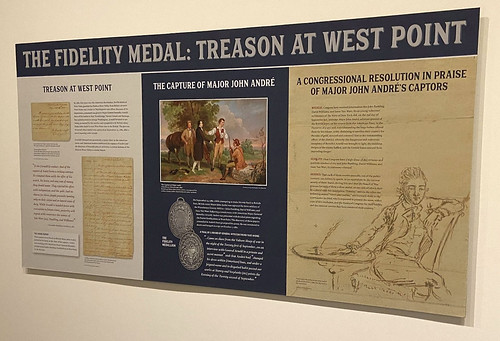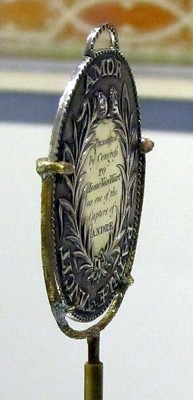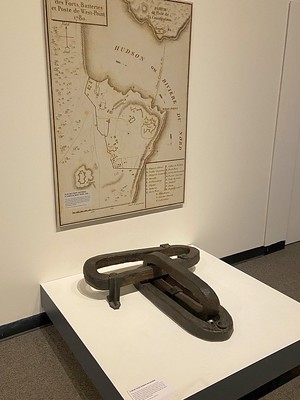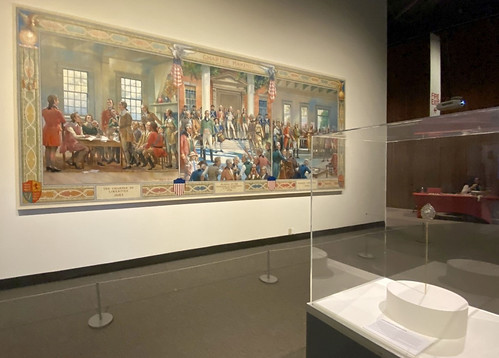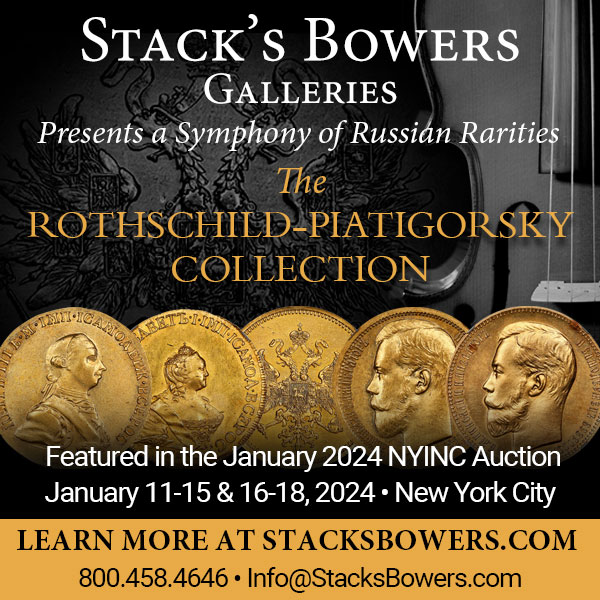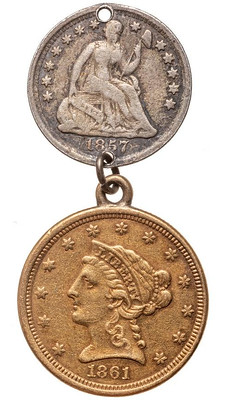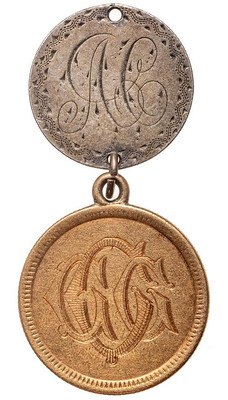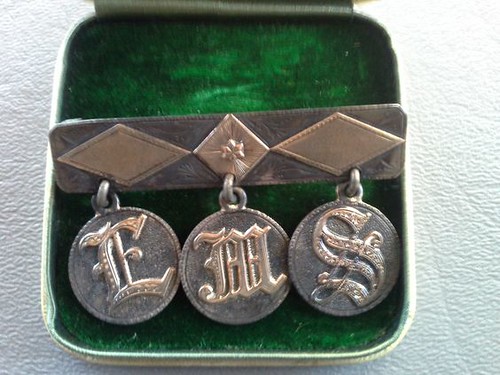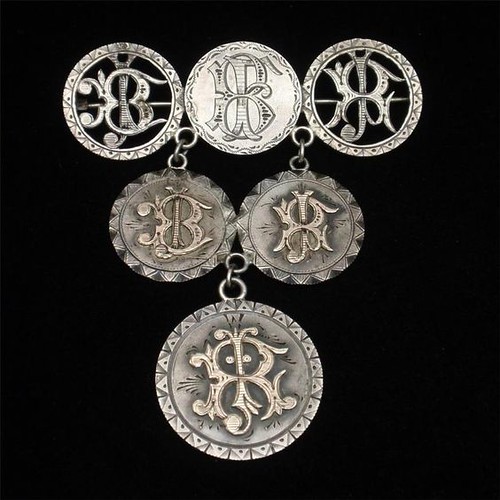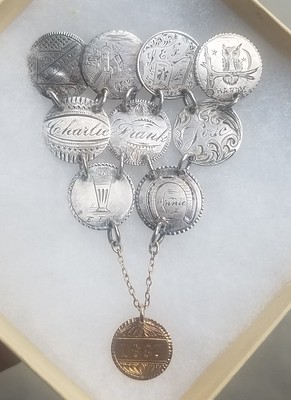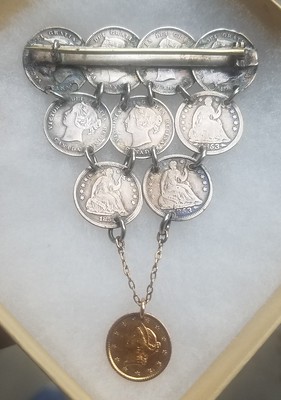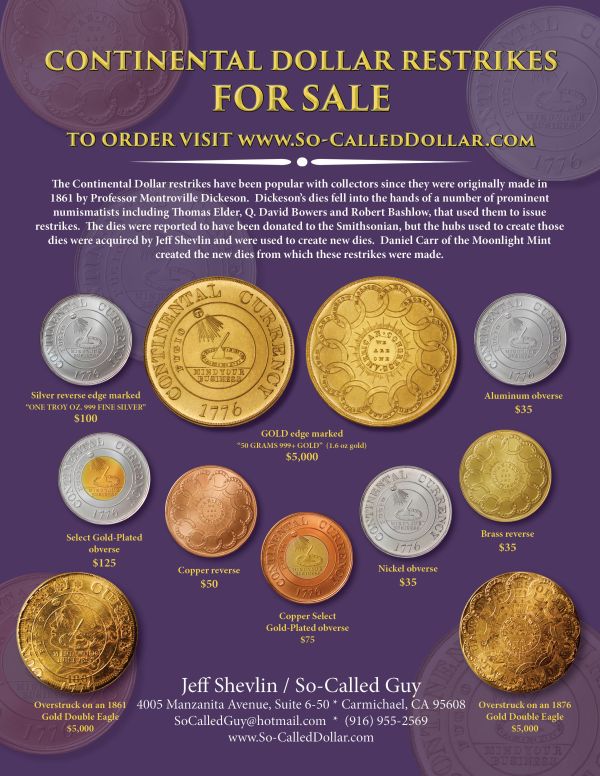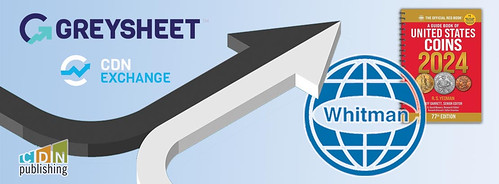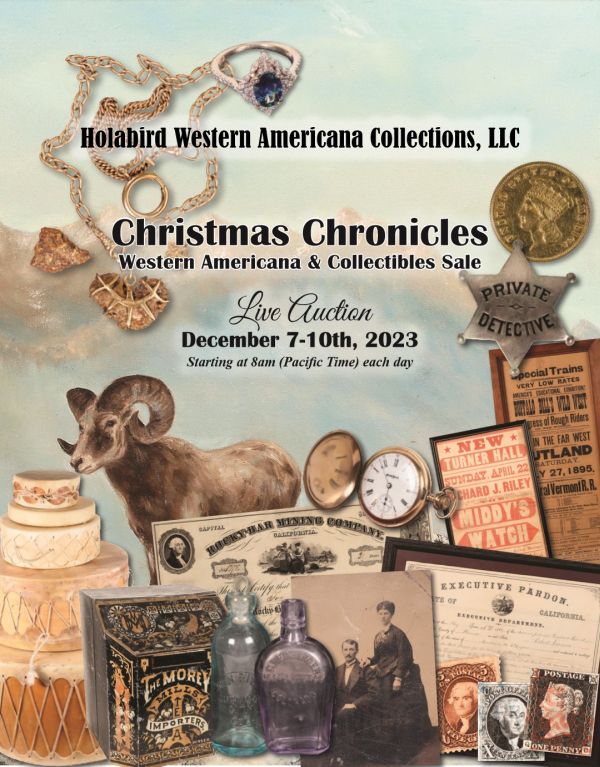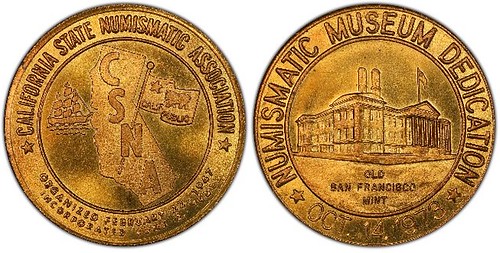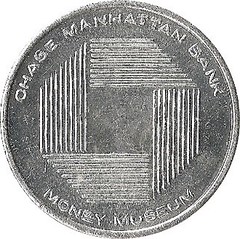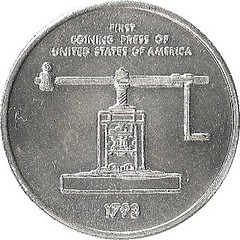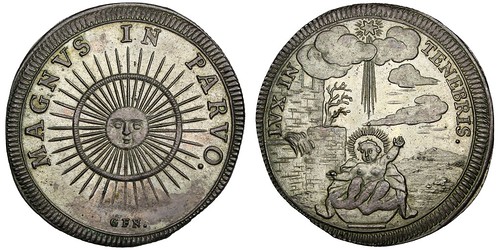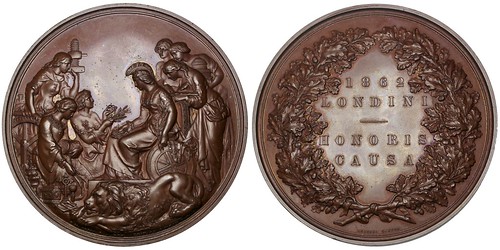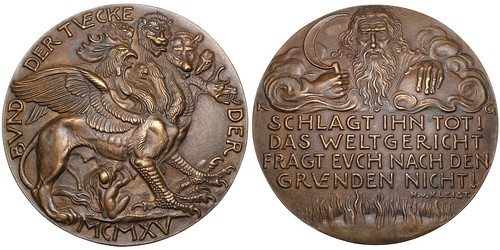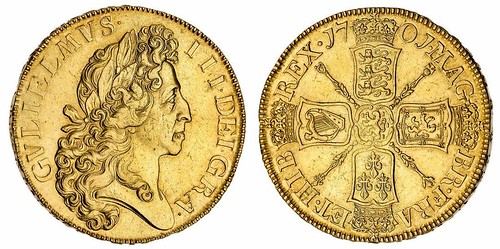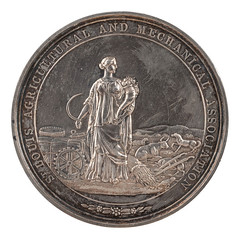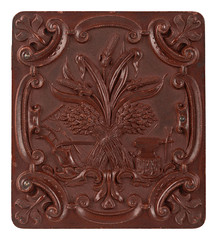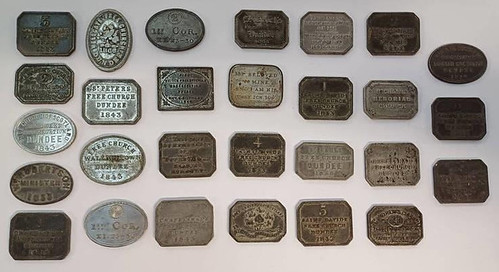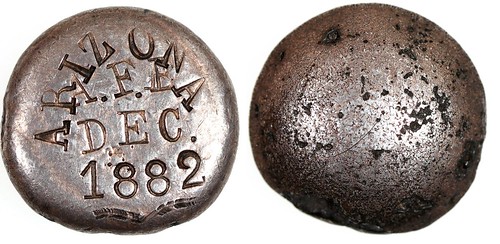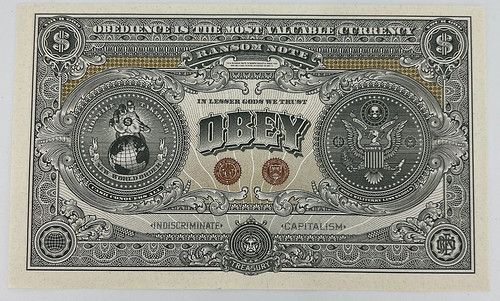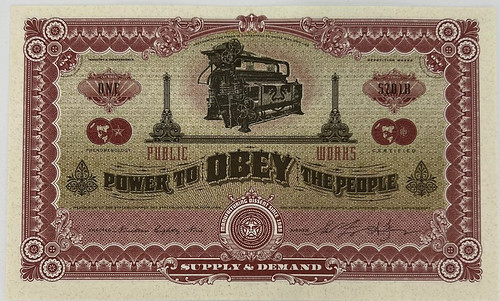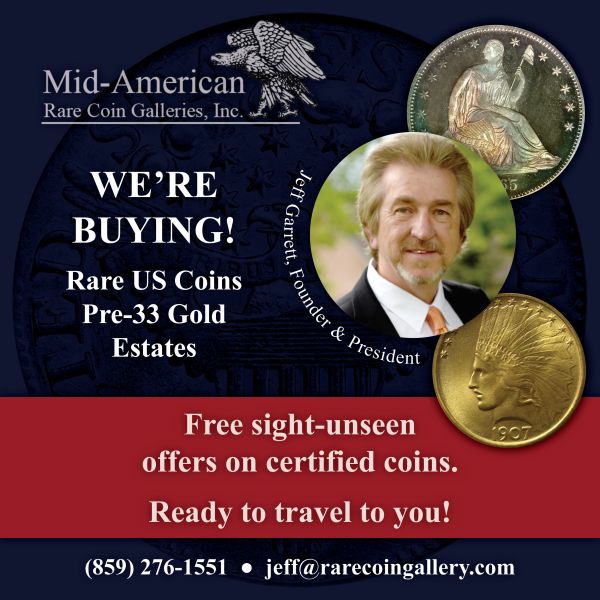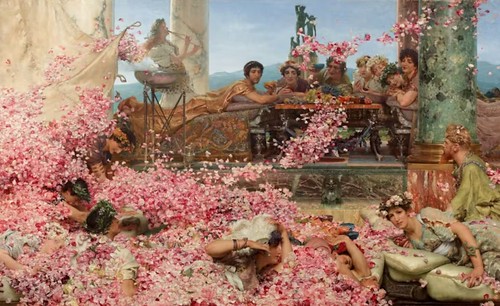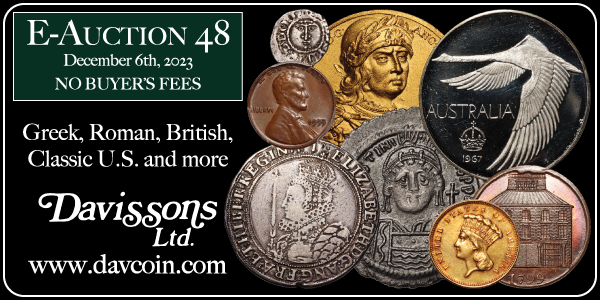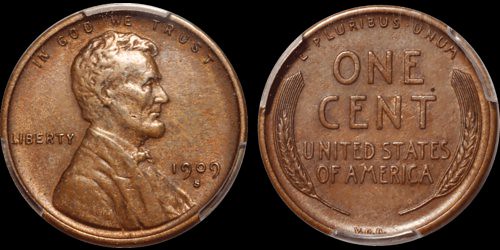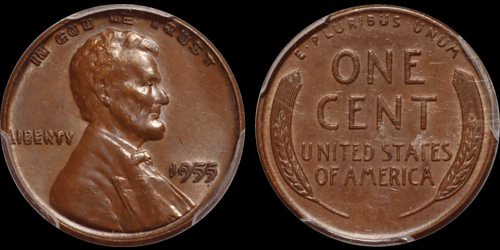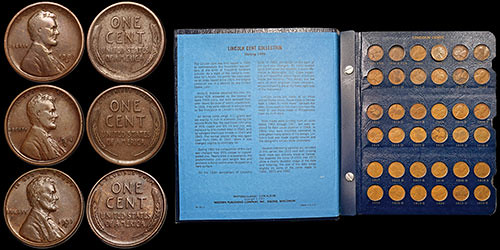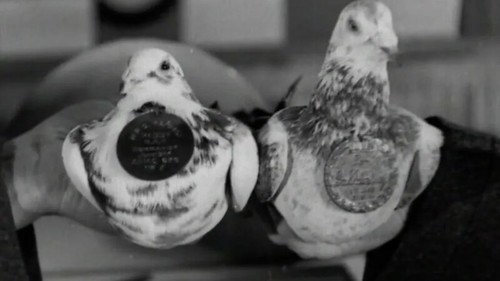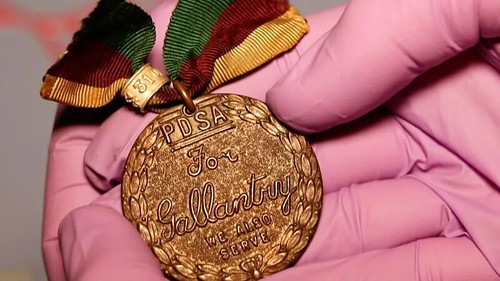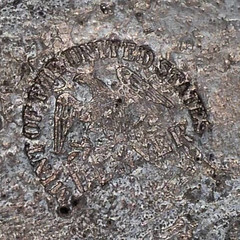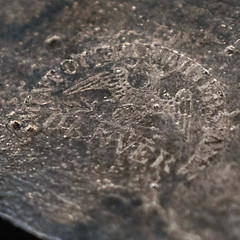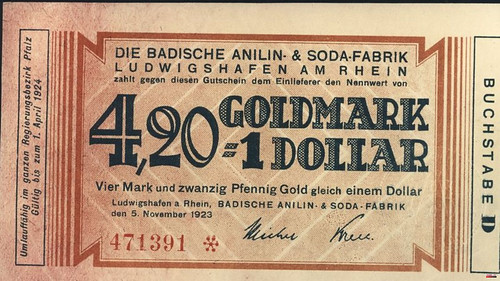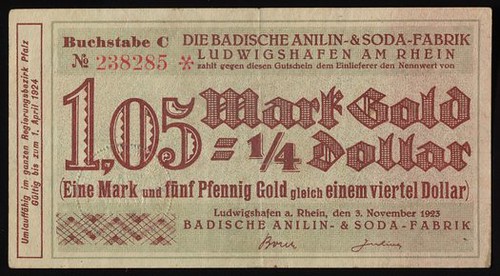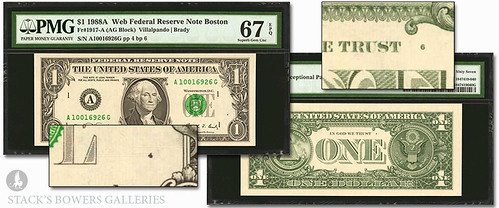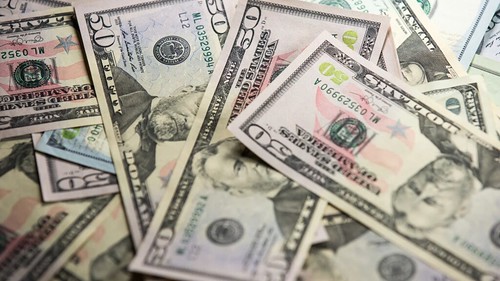
Visit our NBS Sponsors




About UsThe Numismatic Bibliomania Society is a non-profit association devoted to the study and enjoyment of numismatic literature. For more information please see our web site at coinbooks.org SubscriptionsThose wishing to become new E-Sylum subscribers (or wishing to Unsubscribe) can go to the following web page link MembershipThere is a membership application available on the web site Membership Application To join, print the application and return it with your check to the address printed on the application. Print/Digital membership is $40 to addresses in the U.S., and $60 elsewhere. A digital-only membership is available for $25. For those without web access, write to: Jeff Dickerson, Treasurer AsylumFor Asylum mailing address changes and other membership questions, contact Jeff at this email address: treasurer@coinbooks.org SubmissionsTo submit items for publication in The E-Sylum, write to the Editor at this address: whomren@gmail.com BUY THE BOOK BEFORE THE COINSale Calendar |
- WAYNE'S WORDS: THE E-SYLUM DECEMBER 3, 2023
- KUNZE'S 1800 COIN COLLECTION DESCRIPTION
- NEW BOOK: EARLY ERA OF THE NEW ORLEANS MINT
- NEW BOOK: SESTERCES DES ANTONINS - IV (96-192)
- NEW BOOK: COINAGE IN IMPERIAL SPACE
- PERIODICAL: NUMISMATIQUE ASIATIQUE NO. 47
- NNP ADDS NOVEMBER 2023 SYMPOSIUM VIDEOS
- VIDEO: 2016 PCDA CURRENCY CONVENTION
- CCAC SEEKS MEDALLIC ARTS APPLICANTS
- THE INVERTED JENNY LOCKET
- NOTES FROM E-SYLUM READERS: DECEMBER 3, 2023
- FIDELITY MEDAL AT THE NEW YORK STATE MUSEUM
- SILVER AND GOLD COIN LOVE TOKEN JEWELRY
- VOCABULARY TERMS: OVERDATE, OVERDATING
- WHITMAN PUBLISHING, PAST AND FUTURE
- MONEY MUSEUMS IN THE U.S., PART ONE
- MONEY MUSEUMS IN THE U.S., PART TWO
- DAVID SCHENKMAN INTERVIEW, PART FIVE
- NUMISMAGRAM MEDAL SELECTIONS: DECEMBER 3, 2023
- ANS CANADIAN TOKEN SALE
- NUMISMATIC NUGGETS: DECEMBER 3, 2023
- MORE ON ROMAN EMPEROR ELAGABALUS
- THE CLASSIC LINCOLN CENT
- DICKIN MEDAL 80TH ANNIVERSARY
- DENVER MINT SILVER INGOT OFFERED
- THE ANILINE DOLLAR
- WHAT IS A WEB NOTE?
- A RECORD NUMBER OF $50 BILLS
- LOOSE CHANGE: DECEMBER 3, 2023
- COIN MAGICIAN NICOLE CARDOZA
Content presented in The E-Sylum is not necessarily researched or independently fact-checked, and views expressed do not necessarily represent those of the Numismatic Bibliomania Society.
WAYNE'S WORDS: THE E-SYLUM DECEMBER 3, 2023
 Thank you for reading The E-Sylum. If you enjoy it, please send me the email addresses of friends you think may enjoy it as well and I'll send them a subscription. Contact me at whomren@gmail.com anytime regarding your subscription, or questions, comments or suggestions about our content.
Thank you for reading The E-Sylum. If you enjoy it, please send me the email addresses of friends you think may enjoy it as well and I'll send them a subscription. Contact me at whomren@gmail.com anytime regarding your subscription, or questions, comments or suggestions about our content.
This week we open with a rare publication of the contents of an early coin collection in the U.S., three new books, a periodical, updates from the Newman Numismatic Portal, and more.
Other topics this week include notes from readers, Love Token jewelry, overdates, money museums in the U.S., fixed price and auction sales, the classic Lincoln Cent, the Dickin Medal, silver ingots, web notes, and coin magic.
To learn more about John C. Kunze's coin collection, the early New Orleans Mint, Una and the Lion, the CCAC, the Inverted Jenny Locket, the Fogg Museum coin robbery, the Van Wart Fidelity Medal exhibit, Whitman Publishing, the Tammany Society Museum, Communion tokens, Emperor Elagabalus, analine dollars, and the coins of future economic powerhouses, read on. Have a great week, everyone!
Wayne Homren
Editor, The E-Sylum
KUNZE'S 1800 COIN COLLECTION DESCRIPTION
In an online bookstore listing, Kolbe & Fanning Booksellers offer a copy of the only published 18th-century account of a coin collection formed by an American. -Editor
DESCRIPTION OF A CABINET OF COINS AND MEDALS ANCIENT AND MODERN.
Kunze, John C.
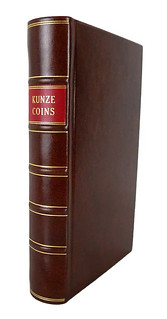 The Medical Repository. Volume III (New York: Printed by T. & J. Swords, 1800). Conducted by Samuel L. Mitchill and Edward Miller. 8vo, modern full brown speckled calf; spine with five raised bands, ruled in gilt; red morocco spine label, gilt. 7, (1), 428 pages [Kunze's article is on pages 351–359]. Some spotting. Near fine in a fine binding. Item #7218
The Medical Repository. Volume III (New York: Printed by T. & J. Swords, 1800). Conducted by Samuel L. Mitchill and Edward Miller. 8vo, modern full brown speckled calf; spine with five raised bands, ruled in gilt; red morocco spine label, gilt. 7, (1), 428 pages [Kunze's article is on pages 351–359]. Some spotting. Near fine in a fine binding. Item #7218
John C. Kunze's 1800 description of his coin collection, possibly the only 18th-century account of a coin cabinet formed by an American collector. Kunze's little-known article, written in the form of a letter to Dr. Samuel Mitchill though intended for publication, is one of the very few detailed portrayals of coin collecting in the early days of the Republic. Kunze (1744–1807) was a Lutheran minister and professor. Having studied at the University of Leipzig, he moved to Philadelphia in 1770, married, and established the Lutheran Theological Seminary. The pastor of Zion Lutheran Church, he served as a member of the Board of trustees of the University of the State of Pennsylvania, where he also served as a professor of languages and philology. He later moved to New York, where he served the Trinity and Christ Church and taught Oriental languages at Columbia. In addition to his religious and scholarly activities, Kunze studied medicine and astronomy, and was the official translator for Congress in 1785.
He begins his letter to Mitchill:
With pleasure I comply with your request, to give you a short description of the little cabinet of coins in my possession. It would be the extravagance of curiosity, bordering on the lust of the eyes, had I made this collection only for my own two eyes. I can therefore have nothing against its publication, provided it is well remembered, that I do not attach any idea of greatness to it.
He does admit that for New York it is a large collection and at any rate, the foundation for a good one is laid.
Kunze's collection was heavily comprised of modern (i.e., post-Renaissance) European coins and medals, though some ancient coins and American pieces were included. Given the collection's contents, it seems reasonable to surmise that he collected in both Europe and America during the late colonial period through his death in 1807. Among the American items in his cabinet were a 1757 Quaker Treaty of Easton Indian Peace Medal (Betts 401), four 1652-dated Massachusetts silver pieces all of different sizes,
a St. Patrick farthing, Boscawen, Pitt and Vernon medals, a Rosa Americana piece, and a Voce Populi.
My duplicates I have in a particular chest, from which every spectator is permitted to take what he pleases, by replacing each with a coin, of any value, which is not yet in the collection.
On Kunze's death, the New-York Historical Society contacted his widow and heirs to inquire about the disposal of the collection. At its meeting of July 14, 1818, the Society's Vice President, Dr. Kosack, read a letter from Mrs. Kunze dated June 30, 1818, in which she donated the collection to the Society. The collection was well-regarded at the time; the 1821 volume of the Collections of the New-York Historical Society contains David Hosack's inaugural address as president of the Society (pages 269 to 280), in which he comments on the Society's coin collection, much of it received from Rev. Dr. Kunze.
The circumstances of the donation were retold in the Proceedings of the New-York Historical Society for the Year 1843. While virtually unknown today, Kunze's epistolary article has not always been forgotten, with Daniel Parish publishing A New York Collection of Ancient and Modern Coins as Described in the Year 1800, by the Owner, the Rev. Dr. John C. Kunze
in the 1907 volume of the Proceedings of the American Numismatic and Archæological Society. More recently, John N. Lupia III has made note of the 1805 printing of the article on his website. Joel J. Orosz, in his monograph on Pierre Eugène du Simitière, cites Robert Hendre Kelby's 1905 history of the New-York Historical Society, which states that the Kunze collection was eventually stolen from that institution, nothing remaining but the cabinet which held the coins and medals.
The Medical Repository was more specialized in title than in actual scope of coverage, reviewing publications on physic, surgery, chemistry, natural history, civil history, politics, topography, voyages & travels, more particularly those that relate to America.
Frank Luther Mott's A History of American Magazines (1930) considered it to be the first scientific journal published in the United States. Our 2014 fixed price catalogue included the first offering of this title in a numismatic context; the recent acquisition of another copy is exciting. Not in Attinelli. Evans 37947. Ex Library of the New York State Medical Association, with their ink stamp on opening pages.
Price: $3,500.00
To read the complete item description, see:
DESCRIPTION OF A CABINET OF COINS AND MEDALS ANCIENT AND MODERN.
(https://www.numislit.com/pages/books/7218/john-c-kunze/description-of-a-cabinet-of-coins-and-medals-ancient-and-modern)
NEW BOOK: EARLY ERA OF THE NEW ORLEANS MINT
Numismatic Researchers Richard Kelly & Nancy Oliver have made a compilation of research material on the early New Orleans Mint available on NNP. Here's their announcement. Thank you! -Editor
Treatise of the Early Era of the New Orleans Mint 1837-1861
by Richard G. Kelly, Nancy Y. Oliver
This is our contribution to Newman's Numismatic Portal online. It is a treatise of the history of the early years of the New Orleans Mint from 1837 until the takeover by the Confederacy in 1861. The work is taken from the many thousands of copies made of Mint Record Group 104 by two noted numismatic researchers, Robert Julian and Roger Burdette, and archivists at the National Archives in Philadelphia and College Park, Maryland.
It is 75 pages long and contains information about the building, employees and coinage. Put together chronologically, and noted from hand written letters (many hard to decipher) from mint officials and others, it took two years to complete. Some years' info has been gleaned from other Portal sources and contemporary newspapers from the period when copies from the archives were not accomplished. However, a recent surge of copies from these sparse years noted is now coming available, and this will require a future update and revision of this said work. This will take some time.
Anyway, because of our appreciation for these folks' untiring efforts to make this information available to researchers, we have decided to donate this work to the Portal with free access to all. Enjoy.
To read the complete work, see:
Treatise of the early era of the New Orleans Mint 1837-1861
(https://archive.org/details/TreatiseNewOrleansMint)
NEW BOOK: SESTERCES DES ANTONINS - IV (96-192)
Laurent Schmitt passed along notice of a new volume in a series on the sestertius of the Antonines. Thank you. It can be ordered directly from the author or online at CGB Numismatics, where I found this English description. -Editor
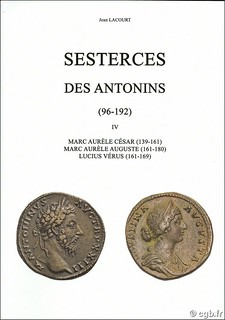 Sesterces des Antonins - IV (96-192)
Sesterces des Antonins - IV (96-192)
Marc Aurèle César (139-161) - Marc Aurèle Auguste (161-180) - Lucius Vérus (161-169)
by Jean Lacourt
The present work, the fourth of a series of 5 volumes devoted to the sestertius of the Antonines, covers the reigns of Marcus Aurelius Caesar (139-161), Marcus Aurelianus Augustus (161-180) and Lucius Verus (161-169).
Intended for both amateurs and professionals, it is designed as a practical tool to facilitate the recognition of these coins. Indeed, it is not a classical catalog or a historical and chronological study, but a key allowing the very fast and sure identification of these sestertius. Contrary to the method usually used in numismatics, this key, of new conception, starts with the precise study of the obverse, and ends with its coding. To this obverse code will then be grafted and merged one or more reverse codes.
For each type of sestertius, the reference works are cited, followed by an inventory of their presence in most of the world sales of the last 12 years, allowing the reader to better appreciate their degree of rarity. This key is illustrated by more than 800 photographs of obverse and reverse.
Author : Jean LACOURT
Publisher : Jean LACOURT
Language : French
Description : 2023, paperback, (21 x 29.7 cm) 428 pages including 40 color plates
Weight : 1880 g.
For more information, or to order, see:
ls117 - Sesterces des Antonins - IV (96-192) Marc Aurèle César (139-161) - Marc Aurèle Auguste (161-180) - Lucius Vérus (161-169) LACOURT Jean
(https://www.cgbfr.com/sesterces-des-antonins-iv-96-192-marc-aurele-cesar-139-161-marc-aurele-auguste-161-180-lucius-verus-161-169-lacourt-jean,ls117,a.html)
Or contact the author at Sesterces61@orange.fr
NEW BOOK: COINAGE IN IMPERIAL SPACE
The December 2023 ANS eNews from the American Numismatic Society announced a new volume of conference papers. -Editor
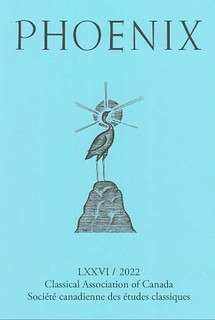 Coinage in Imperial Space: Coins in the Economy of the Achaemenid and Early Hellenistic World: Conference Papers in Phoenix
Coinage in Imperial Space: Coins in the Economy of the Achaemenid and Early Hellenistic World: Conference Papers in Phoenix
Papers from the 2017 conference in Krakow, Poland will be published in volume 76 of Phoenix, a journal of the Classical Association of Canada. The conference was organized by the Institute of Archaeology of the Jagiellonian University, the Faculty of Classics at the University of Oxford, and the National Museum in Krakow. Authors in the conference report include Peter van Alfen (ANS Chief Curator), Jonathan Kagan (ANS Trustee), and Andrew Meadows (former ANS Deputy Director). To purchase, contact phoenix@utoronto.ca.
Here's a list of the papers. -Editor
1. Andrew Meadows, "Coinage in Imperial Space: The Problems Raised by the Ps. Aristotelian Oikonoinika"
2. Peter van Alfen, "Payment, Profit, or Prestige? The Political Economy of Achaemenid Coin Production"
3. Francois de Callataji, "Pseudo-civic not Civic: The Abundant Double Sigloi Struck by Pamphylian and Cilician Cities (ca 460-333 BCE)"
4. Jaroslaw Bodzek, "Kings, Satraps, Local Dynasts and Cities in Achaemenid Imperial Space: Ps. Aristotle's Oikonontika and the Numismatic Reality"
5. Christopher Tuplin, "Of Darics, Staters and Disks: Some Issues in Achaemenid Imperial Space"
6. Selene Psosna, "The KIN (Symmachikon) Coinage of the Classical Period: Agesilaus Versus Lysander"
7. Aneurin Ellis-Evans & Jonathan Kagan, "Bimetallism, Coinage, and Empire in Persian Anatolia"
8. Frederique Duyrat, "Money in Southern Transeuphratene during the 4th century BCE"
9. Haim Gitler & Oren Tal, "Indigenous Coinages in Palestine: Towards an Understanding of the Persian — Hellenistic Transitional Phase of Money Use"
10. Evangelism Markou, "The Coinage of the Kings of Cyprus from the Achaemenid to Hellenistic Rule: An Autonomous Royal Coinage?"
11. Marek Jan Olbrycht, "The India-related Tetradrachms of Alexander the Great"
12. Karsten Dahmen, "Money and Legitimacy after Alexander"
Cost: $95 USD ($148 for institutions) To purchase, contact phoenix@utoronto.ca
PERIODICAL: NUMISMATIQUE ASIATIQUE NO. 47
Here are the contents of the latest issue of Numismatique Asiatique. -Editor
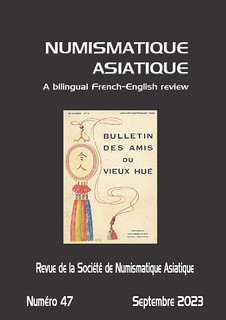 EDITORIAL
EDITORIAL
About the forgeries offered on the numismatic market
ANNAM
The Bài Plaques Used in Vietnam during the Nguy?n Dynasty
by Craig Greenbaum
CENTRAL ASIA
Apropos of coins with the legend zhou-yuan tong-bao from finds in Kyrgyzstan
by V. A. Belyaev, S. V. Sidorovich
LAOS
La fabrication et l'usage des lats dans le Bas-Laos à la fin du XIXe siècle selon les témoignages français
by Alain Escabasse
HISTOIRE
Il y a 125 ans : la ruée vers l'or du Yukon
For more information, or to order, see:
https://sites.google.com/site/societedenumismatiqueasiatique/revue
THE BOOK BAZARRE
NNP ADDS NOVEMBER 2023 SYMPOSIUM VIDEOS
The latest additions to the Newman Numismatic Portal are videos of the latest NNP Symposium. Project Coordinator Len Augsburger provided the following report. -Editor
NNP Symposium Video Posted
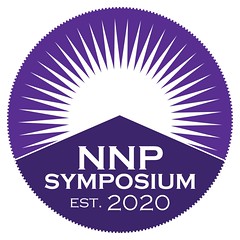 Video from the NNP Symposium, held November 2-4, 2023, is now posted. Our feature presentation, Treasures of the ANA Museum, began with the debut of an NNP-produced video on the subject, followed by American Numismatic Association Museum Curator Doug Mudd answering viewer questions on various aspects of the collection. In other presentations, Bill Eckberg presented new photographs of the enigmatic 1792 Judd-6 Birch cent, a coin last seen at the 1981 Garrett sale. Patrick McMahon spoke on Anna Powell Jones and Rebecca Salisbury, two early U.S. numismatists, while Bob Bair provided an overview of the famed
Video from the NNP Symposium, held November 2-4, 2023, is now posted. Our feature presentation, Treasures of the ANA Museum, began with the debut of an NNP-produced video on the subject, followed by American Numismatic Association Museum Curator Doug Mudd answering viewer questions on various aspects of the collection. In other presentations, Bill Eckberg presented new photographs of the enigmatic 1792 Judd-6 Birch cent, a coin last seen at the 1981 Garrett sale. Patrick McMahon spoke on Anna Powell Jones and Rebecca Salisbury, two early U.S. numismatists, while Bob Bair provided an overview of the famed Una and the Lion
coinage. Other sessions focused on various aspects of U.S. and world coins and paper money.
The NNP Symposium, sponsored by the Newman Numismatic Portal, was launched in the fall of 2020 in response to the pandemic. This free event is Zoom-based and draws presenters from all areas of numismatics. The recent event represented the seventh Symposium. As always, many thanks to our speakers, and for those who are interested in presenting at a future event, please contact NNPCurator@wustl.edu.
Here's a list of presentation titles. What a great selection of topics! -Editor
- Changing Coin Markets: What, Me Worry?
- Easy Money: American Puritans and the Invention of Modern Currency
- Collecting Byzantine Coins
- American Slavery and the Liberty Cap
- The Evolution of Postage and Fractional Currency
- Anna Powell Jones and Rebecca Salisbury: Founders of the Numismatic Collection at the MFA
- The Rabbit Hole of the 1909 Lincoln Wheat Cent
- Treasures of the ANA Museum
- Facts and Misconceptions Concerning the Medallic Issues During Lafayette's 1824/5 Visit
- Running a Successful Coin Club
- A Historical Sketch of Reformation Numismatics (1983-2023)
- Little Louis: How a Piece of Small Change Sparked a Fashion Craze and Untangling Keicho Ichibu
- King Edward VII 1 Rupee Coins
- The First Coin Made Under the U.S. Constitution
- The Coin Show Podcast
- Japanese-American Relocation Center Monies of World War II
- Large Cent History
- Big, Bold, and Beautiful: England's 1839 'Una and the Lion' Coins
Link to NNP Symposium video:
https://nnp.wustl.edu/library/multimediadetail/539070
To read the earlier E-Sylum article, see:
NOVEMBER 2023 NNP SYMPOSIUM ANNOUNCED
(https://www.coinbooks.org/v26/esylum_v26n41a08.html)
VIDEO: 2016 PCDA CURRENCY CONVENTION
The David Lisot Video Library on the Newman Numismatic Portal can be found at:
https://nnp.wustl.edu/library/multimediadetail/522852
We highlight one of his videos each week in The E-Sylum. Here's one about the 2016 PCDA Currency Convention -Editor
COOL CURRENCY! PCDA Currency Convention Nov 2016
See paper money valued at millions of dollars from some of America's top experts. Interviewer: David Lisot with Sammy Berk, 1886 Silver Certificate $1 "Martha Washington" Fine Condition, 1896 Educational $1 VF+, Sergio Sanchez, $5 Silver Certificate 1886 "Silver Dollar Back," PMG 6, Andrew Shiva, $20 Reno, NV First Charter PCGS PPQ VF35, $10 Winnemucca, NV Brownback, PCGS VF30, $5 Carson City PCGS VF25, 3 and Peter Treglia, 1993 FRN $10 "Four Eyes" PMG AU55
To watch the complete video, see:
https://nnp.wustl.edu/library/book/548603
CCAC SEEKS MEDALLIC ARTS APPLICANTS
The U.S. Mint is seeking applicants for an open seat on the Citizens Coinage Advisory Committee (CCAC). Here's the press release. -Editor
as the Member Specially Qualified in Medallic Arts or Sculpture
The United States Mint is seeking applicants for an appointment to the Citizens Coinage Advisory Committee (CCAC) as the member specially qualified to serve on the advisory body by virtue of their education, training, or experience in the medallic arts or sculpture. The deadline to email submissions is no later than 5 p.m. (ET) on Wednesday, January 3, 2024. The United States Mint will review all applications and forward recommendations to the Secretary of the Treasury for consideration.
The CCAC is composed of 11 members — one specially qualified in numismatic collection curation; one specially qualified in the medallic arts or sculpture; one specially qualified in American history; one specially qualified in numismatics; three individuals appointed to represent the interests of the general public; and four individuals recommended by leadership of both the United States House of Representatives and United States Senate.
Members are appointed for a term of four years. No individual may be appointed to the CCAC while serving as an officer or employee of the Federal Government, and all applicants must be United States citizens. CCAC members are Special Government Employees and are therefore subject to various applicable conflict of interest laws and ethics regulations.
Individuals wishing to be considered for appointment to the CCAC should submit a resume or curriculum vitae along with a cover letter describing their reasons for seeking appointment, and detailing their specific education, training, or experience by email to info@ccac.gov, Attn: Jennifer Warren. The deadline to email submissions is no later than 5 p.m. (ET) on Wednesday, January 3, 2024.
About the CCAC
The CCAC was established by an Act of Congress in 2003. It advises the Secretary of the Treasury on theme or design proposals relating to circulating coinage, bullion coinage, Congressional Gold Medals, and other medals produced by the United States Mint. The CCAC also makes commemorative coin recommendations to the Secretary and advises on the events, persons, or places to be commemorated, as well as on the mintage levels and proposed designs.
The CCAC is subject to the authority of the Secretary of the Treasury. The United States Mint is responsible for providing necessary and appropriate administrative support, technical services, and advice. The CCAC submits an annual report to Congress and the Secretary of the Treasury, describing its activities and providing recommendations.
For more information, or to apply, see:
https://www.ccac.gov/
Request for Candidates Interested in Appointment to the Citizens Coinage Advisory Committee
(https://www.federalregister.gov/documents/2023/11/21/2023-25719/request-for-candidates-interested-in-appointment-to-the-citizens-coinage-advisory-committee)
THE INVERTED JENNY LOCKET
Last week I asked about the whereabouts of the locket containing an "Inverted Jenny" stamp given by Col. E.H.R. Green to his wife Mabel. -Editor
Julia Casey writes:
"The Inverted Jenny Locket was sold by Stack's in 2015 - to an anonymous coin collector! "
Wow, nice find! Interesting story that has a connection to a famous Jenny theft. Here's an excerpt from the lot description. -Editor
Mabel Green's Jenny
Locket
Gift from Colonel Edward H. R. Green to his wife
United States Air Post 1918 24c Carmine Red and Blue, Center Inverted (C3a), position 9, never hinged, straight edge at top, short corner perforation at upper left, trivial corner creases at bottom left and right, encased back-to-back with never hinged example of the normal stamp (C3) in gold-rimmed glass sided locket with clasp, one side with small chip at bottom.
When Mabel Green died in Miami at age 79 in April 1950 she bequeathed the locket to her longtime companion Dorothy Nicholson. Dorothy moved to Long Island, later marrying a New York lawyer named Lester Stickles, the locket remained in a safety deposit box in New York.
As the years passed collectors began recording all the known positions from the sheet from the numbers Eugene Klein had penciled on the backs of the stamps in 1918. Only one stamp from the top row eluded the researchers; position 9. In an interesting twist position 18 from the Miller collection housed at the New Public Library was stolen in 1977 along with 53 other rare stamps. Recovered in the early 1980's its perforations had been removed at top and its number on the reverse had been altered from 18 to the missing number 9. Finally on December 26th 1984, George Amick, author of The Inverted Jenny, Money, Mystery, Mania (1986) was permitted to photograph the locket for the first time. By comparison to the adjoining stamps it was confirmed as the missing position.
To read the complete lot description, see:
United States Air Post 1918 24c Carmine Red and Blue, Center Inverted (C3a), position 9, never hinged, straight edge at top, short corne...
(https://auctions.stacksbowers.com/lots/view/1-1DLCA/united-states-air-post-1918-24c-carmine-red-and-blue-center-inverted-c3a-position-9-never-hinged-straight-edge-at-top-short-corne)
Julia adds:
"During my search for information, I came across a 2015 post on a stamp forum. This is about another of Green's Inverted Jenny stamps that Mabel played a part in its history. I haven't found any more details about this other one!"
This is the one she used for postage, and is cancelled. -Editor
Two of the most fabled inverted Jenny stamps (my opinion) but not known by many collectors are the inverted Jenny locket and the used inverted Jenny. Both are associated with Colonel Green's wife, Mabel. The later stamp, she took from his desk to mail a letter to him, not realizing its value. Colonel Green went into shock when he received the letter and noticed the stamp, but took it in stride. That is NOT the one being sold.
To read the complete article, see:
US inverted Jenny locket up for auction again
(https://stampbears.net/thread/3339/inverted-jenny-locket-auction-again)
To read the earlier E-Sylum article, see:
COL. GREEN AND THE INVERTED JENNYS
(https://www.coinbooks.org/v26/esylum_v26n48a22.html)
NOTES FROM E-SYLUM READERS: DECEMBER 3, 2023
George Kolbe on Coin-A-Rama City
George Kolbe writes:
"From 1962 to 1968 I lived in Redondo Beach, not that far away from Coin-A-Rama City. I was a regular visitor. I sold coins on the bid board and occasionally rented a bourse table on Wednesdays. What an amazing hub of numismatic wheeling and dealing it was.
"My wife Linda and I were good friends with Eileen Lawson. Eileen was a major force in Southern California coin clubs and numismatic organizations and conventions. She was smart as a whip and selfless in devotion to promoting her chosen hobby. She died fairly young and deserves far more credit than generally accorded her.
"In later years I visited Coin-A-Rama City a time or two. The magic was gone."
Thanks - it's great to get these first-person accounts from people who were there. -Editor
To read the earlier E-Sylum article, see:
COIN-A-RAMA CITY
(https://www.coinbooks.org/v26/esylum_v26n47a18.html)
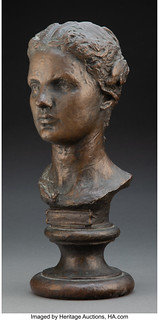 Study Head of Hettie Anderson Sells
Study Head of Hettie Anderson Sells
Robert Luton writes:
"I learned of the recent auction of the Saint Gaudens Hettie Anderson sculpture sale from your newsletter. It had a $40k-$60k estimate which I told my wife I thought was very conservative. Indeed, it did in fact sell for $200k (including premium) on Nov 17th. Indeed, it belongs in a museum."
Thank you. Congratulations to the new owner. -Editor
To read the earlier E-Sylum article, see:
NOTES FROM E-SYLUM READERS: OCTOBER 29, 2023 : Saint-Gaudens' Study Head of Hettie Anderson
(https://www.coinbooks.org/v26/esylum_v26n44a09.html)
More on Harvey Richer
Chris Sutter writes:
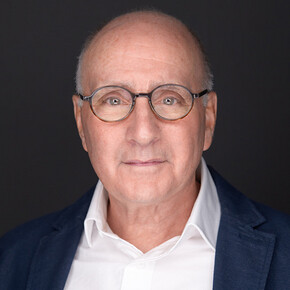 "I was extremely surprised to read about Harvey Richer's passing.
"I was extremely surprised to read about Harvey Richer's passing.
"I met Harvey at the ANA in Chicago when he taught a class in Newfoundland gold coins. While I had no prior knowledge in the coins of Newfoundland I was fascinated by his talk and decided to collect the set of Two Dollar Gold coins. I purchased his book and even contacted the ANA to get his email address and send him a short note telling him how much I enjoyed his class and that he had inspired me to start my new collection. He responded with a nice reply.
"At this time I did not know who Harvey was. To me he was just a nice man who gave back to the hobby by writing a book and teaching a class. To find out that he was an eminent Astronomer was a complete shock to me.
"At the 2022 ANA I saw Harvey when he was selling his 100 Greatest Canadian Coins and Tokens
book at Whitman's booth. While I had no intention of buying the book, I just wanted to say Hi
, I left not only with a book, I left with a signed inscribed copy!
"An additional surprise in the article was the 1944 birthdate. I never would have guessed that he was 78 when I last saw him.
"I try to stay informed regarding the people in the hobby by reading hobby publications, Coin World and the Numismatist especially, and attending the ANA Summer Seminar and Fall Show when it is in Chicago. Your weekly newsletter is also a great source for this information. However, it really hits home when the news is about someone I knew and had actually met.
"Thank-you for your effort on the newsletter. I hope you never wonder if you actually have an impact in someone's life, but if you do wonder, this email should reinforce the fact that you do."
Thank you. It's always fun to put together, and nice to know it's read and appreciated. -Editor
To read the earlier E-Sylum article, see:
HARVEY B. RICHER (1944-2023)
(https://www.coinbooks.org/v26/esylum_v26n48a08.html)
ANACS Authenticator Tom DeLorey
Tom DeLorey writes:
"The last issue of the E-Sylum illustrated a 1981 ANACS certificate for an 1892 Proof Nickel with a repunched 1 & 2. As the Senior Authenticator and variety specialist at the time I would have handled the piece, though I cannot claim to remember it."
To read the earlier E-Sylum article, see:
CIRCA 1981 ANACS GRADING CERTIFICATES
(https://www.coinbooks.org/v26/esylum_v26n48a24.html)
More on the Money Museum of the National Bank of Detroit
Tom DeLorey adds:
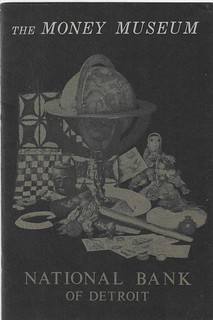 "The same issue has a nice writeup of the Money Museum at the National Bank of Detroit. As a student at Wayne State University beginning in the Fall of 1968, I would occasionally after classes walk down Woodward Ave. to downtown Detroit to visit coin shops and old book stores along the way, and at least twice to visit the Money Museum. Sometime during my years at Wayne State I asked Charles Hoskins if there might be a possibility of a part-time job at the Money Museum, but he explained that the exhibits were basically static, and his was a one-man operation.
"The same issue has a nice writeup of the Money Museum at the National Bank of Detroit. As a student at Wayne State University beginning in the Fall of 1968, I would occasionally after classes walk down Woodward Ave. to downtown Detroit to visit coin shops and old book stores along the way, and at least twice to visit the Money Museum. Sometime during my years at Wayne State I asked Charles Hoskins if there might be a possibility of a part-time job at the Money Museum, but he explained that the exhibits were basically static, and his was a one-man operation.
"(I do remember that one of the exhibits was a complete original set of the Thomason Medallic Bible displayed as though fruit on a tree-like structure inside a tubular glass case, the medals attached to the ends of the branches by means of metal loops pinched down under the high rims on either side! I strongly suspect that the soft White Metal medals were permanently damaged by these rings, but I do not know that for a fact.)
"By the time I graduated in 1972 Hoskins had gone on to found ANACS in Washington, D.C., and when I heard that he was looking to hire an Assistant Authenticator I once again asked him for a job. However, he hired fellow Detroiter John Hunter instead, which left me at liberty to go to work for Coin World when an opening came up in 1973. ANACS moved to Colorado Springs in 1976, without Hoskins, and I was offered a job there in 1978."
Thanks for your notes - the best part of The E-Sylum is hearing directly from the people who were there as hobby history was being made! -Editor
To read the earlier E-Sylum article, see:
SHAPERO, DODSON AND THEIR MONEY MUSEUM
(https://www.coinbooks.org/v26/esylum_v26n48a20.html)
Big Framed Stamps
"I liked the big framed stamps. I had an idea to enlarge stamps to fill an 8.5 X 11 and the postal service could sell them for $5 to collectors and raise money at the same time. I made some up and mailed them to my then congressman Greg Pence. That was in 2020. NEVER heard back. My new congressman Banks, is no better. I've pitched him the idea to modify our existing coin designs with different versions of the same people, now for the last eleven months.
I believe the enlarged stamps would generate a lot of money for the postal system. I even hung some of the enlarged stamps up and they look great. But alas, I'm not a lobbyist so there was nothing in it for them. Anyway, those enlarged stamps look cool!"
I like them, too. Great artwork, so often overlooked. -Editor
To read the earlier E-Sylum article, see:
WAYNE'S NUMISMATIC DIARY: NOVEMBER 26, 2023
(https://www.coinbooks.org/v26/esylum_v26n48a26.html)
Dumb Bell
In the you-get-what-you-pay-for-department,
Rob Luton writes:
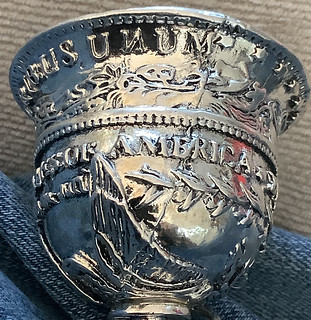 "Do you recall your skepticism regarding Morgan Dollars at less than melt values? Well, unless the U.S. changed their coin design (and the spelling of UNUM) then I believe your instincts were correct. Had to see one to confirm (and yes I'm pursuing the seller to correct their false advertising). My guess is at best they use melted Morgans in the silver used to plate the non-silver cast bell."
"Do you recall your skepticism regarding Morgan Dollars at less than melt values? Well, unless the U.S. changed their coin design (and the spelling of UNUM) then I believe your instincts were correct. Had to see one to confirm (and yes I'm pursuing the seller to correct their false advertising). My guess is at best they use melted Morgans in the silver used to plate the non-silver cast bell."
Ugh. No angel's getting their wings when that one rings... Thanks for the follow-up! -Editor
To read the earlier E-Sylum article, see:
NUMISMATIC NUGGETS: NOVEMBER 12, 2023
(https://www.coinbooks.org/v26/esylum_v26n46a22.html)
This Week in Numismatic History
Pete Smith writes:
"Fifty years ago, on December 2, 1973, a man used a ruse to get into Harvard's Fogg Museum. Once inside, he pulled a gun, tied up a guard and opened the door for three more robbers. They went to the third floor and used the guard's keys to open the coin room.
"The robbers removed a safe with 2650 coins on loan from the Dewing Greek Numismatic Foundation and additional coins from the Harvard collection adding up to more than 6000 ancient Greek and Roman coins and 105 medals.
"Value of the loss was estimated at $5 million dollars. It was the largest art theft in the United States up to that time."
Thanks - what a sad event. -Editor
FIDELITY MEDAL AT THE NEW YORK STATE MUSEUM
Julia Casey visited the display of the Van Wart Fidelity Medal at the New York State Museum, and provided this report. Thank you! -Editor
It was a brisk late fall day when I traveled to the New York State Museum in Albany to see the Van Wart Fidelity Medal. The museum is located across Madison Avenue, on the south side of the Empire State Plaza. Here is the view from the entrance with the Corning Tower and The Egg.
The New York State Capitol, with the red roof, is in the distance.
The museum is free to enter (donations requested) and there is a small parking lot available at $10 a day – or free after 2 pm. When I arrived, this lot was full, so I used my wiles to finagle street parking. I lived in this area of Albany when I went to law school, and I parked on a familiar side street (free for 2 hours).
Entering the main lobby, I knew the medal was in the West Corridor,
and I was pleased to find that it was located so close to the entrance. You can see the display in the background in the center of the image taken from the vantage of the entrance doors.
The exhibit area is somewhat spartan. This didn't matter to me because I was thrilled just to be able to see it! However, I'm not a civilian museum visitor; after all, I'm a numismatist. The intent is apparently to spotlight the medal, as it is displayed on its own with just an explanatory placard.
The André Capture Medal, or the Fidelity Medallion, is the first military medal authorized and presented by the United States Congress. The medal was created specifically for the three enlisted militia men who captured John André, and it was never presented again. It can be considered the oldest decoration in the US military. The medal featured here was awarded to Isaac Van Wart. Van Wart was born in New York in 1750 and died in Westchester County on May 23, 1828.
The Latin inscription translates, Love of County Conquers.
Gift of the Estate of Rae Faith Van Wart Robinson.
There is a composition on the wall that gives some history.
Nearby are three links from Thomas Machin's Great Chain!
There is ambiance provided by David C. Lithgow's Charter Making mural.
The museum did not have restrictions on taking photos, except that there could be no flash photography. I am delighted that the medal is positioned in such a way as to make viewing the edge possible. This is the only original Fidelity Medal whose whereabouts are presently known. We should all be grateful for the benevolence of Rae Faith Van Wart Robinson in ensuring that the Van Wart Fidelity Medal is preserved and accessible. The New York State Museum website provides additional information and indicates that the medal will be on exhibit until the end of 2023.
For more information, see:
https://www.nysm.nysed.gov/exhibitions/fidelity-medal
To view the complete image album on Flickr, see:
https://www.flickr.com/photos/coinbooks/albums/72177720313127438/
(https://www.flickr.com/photos/coinbooks/albums/72177720313127438/)
To read the earlier E-Sylum articles, see:
MUSEUM ACQUIRES VINCIT AMOR PATRIAE MEDAL
(https://www.coinbooks.org/v26/esylum_v26n30a12.html)
WYATT COPY OF MAJOR ANDRE MEDAL OFFERED
(https://www.coinbooks.org/v26/esylum_v26n42a28.html)
SILVER AND GOLD COIN LOVE TOKEN JEWELRY
I found this earlier this week for the Numismatic Nuggets article, but I reached out to Love Token expert Carol Bastable, and she shared additional information for readers. Thanks! -Editor
1861 $2.50 Love Token with reverse nicely engraved CGC. Cannot tell which reverse because of the engraving. 1857 half dime seems to be engraved AC on reverse. 1861 in bezel, 1857 has two small holes and both connected with loop
Most Love Tokens are singles, but are sometimes seen in multiples as part of bracelets and other jewelry items. This one is the first I recall seeing with coins of two different metals. -Editor
To read the complete lot description, see:
1860 $2.50 GOLD LOVE TOKEN & 1857 1/2 DIME TOKEN
(https://bid.alexcooper.com/lots/view/1-8EL2UM/1860-250-gold-love-token-1857-12-dime-token)
Here are Carol's additions on the topic, ending with images of another really spectacular two-metal aggregate piece. -Editor
Gold and silver coins are not often found in the same jewelry piece, but I have seen it done. This jewelry item is not complete, so we do not know what it came off of or if someone at a later point in time just linked them together.
I do have an affinity for gold overlay love tokens. You can find silver coins with gold monograms adhered on top, although not terribly common. There are gold on gold overlaid coins too. While all gold is more luxurious, one could argue that the bimetal is more striking visually.
I attached two images from my Pinterest board. One is a bar pin with gold overlay on both the brooch and the three dimes dangling from it. The other is what I usually term a triangle brooch. These have rows of coins that diminish in quantity with each row. The resulting shape is a triangle.
The last photo is another triangle brooch that I dug out of my collection to photograph as another example of silver love tokens paired with a gold coin. The bottom coin is a type one gold dollar.
To view Carol's Pinterest page on Overlay Love Tokens, see:
https://www.pinterest.com/misslovetoken/overlay-love-tokens/
VOCABULARY TERMS: OVERDATE, OVERDATING
Here's another entry from Dick Johnson's Encyclopedia of Coin and Medal Terminology. -Editor
Overdate, Overdating. One or more numerals on a die reworked by punches or re-engraved to change the date to a later – or correct – year. Overdating is of two kinds: to correct a punch anomaly where an incorrect punch was used (or the correct one upside down, for instance), or to extend the life of a usable die by permitting it to be retained in use and changing the date to a proper year. It is accomplished by annealing, softening the die and overpunching with the correct punch in the proper location. The depth of the punching is reason for obliterating the under figure and for a slightly raised figure in the struck piece.
Inevitably, however, parts of the under figure still remain in the die and these are still intact (though somewhat indistinct) in all pieces struck from the restored die. It is as if the under figure sunk lower into the field and left only the fuzzy remains of the topmost portion of the previous figure overshadowed by the new figure rising higher and bolder from the surface.
Overdate coins. A common practice in the 19th century and prior -- rarely in the 20th century but these do exist, however, as the 1922 over 21 Mercury dime. Coin dies were altered by overdating to lengthen their usable life and to conform to the requirement of striking with the current date only. In the 18th century such overdating was accomplished with simple repunching. In the 19th century the practice was more of filling, CHASING and then repunching which tends to obliterate any under figures.
Each such overdate creates a new die variety. These are eagerly studied by numismatists.
Overdate medals. Overdates are rare on medals; although medal dies are updated by die retooling – generally an annealing of the die, removal of old dates, punching or engraving the new date, then hardening of the die again. Medals do not require to be dated in the year in which they are struck – or even dated at all – but some dies are updated, say, for an annual award medal each year.
See DIE RETOOLING; DIE VARIETY; PUNCH, PUNCHEON (1); REPUNCH, EPUNCHING; UPDATE, UPDATING
To read the complete entry on the Newman Numismatic Portal, see:
Overdate, Overdating
(https://nnp.wustl.edu/library/dictionarydetail/516441)
WHITMAN PUBLISHING, PAST AND FUTURE
A Greysheet article by Patrick Ian Perez discusses the recent CDN Publishing acquisition of Whitman Publishing, and mentions an interesting piece of Whitman history I'd overlooked or forgotten about. -Editor
As the title of this column is The Business of Numismatics, I usually try and cover the latest in the wider rare coin market. As the year 2023 closes, the biggest news in numismatics happens to hit much closer to home. As many readers may have heard, CDN Publishing (parent of the Greysheet) has acquired the historic and important Whitman Publishing in November.
First, some history. Western Printing Company was first established in Racine, Wisconsin in 1907, and by 1910 was a successful venture. In 1916, Western took over a bankrupt Hamming-Whitman publishing company, and it was decided to adopt the Whitman name as a subsidiary. Western Publishing remained the parent company, and there is no doubt there are many readers who have seen this imprint on the backs of early example of the distinct dark blue coin folders that defined an entire generation of collectors. In addition to coin books and supplies, Western Publishing produced famous lines of children's books, including the Little Golden books.
Incredibly, from 1938 to 1962 Western had exclusive rights to all Disney characters to create products, primarily comic books. Imagine the value of these rights today! In order to promote the sales of coin boards and folders, the first major numismatic publication undertaken by then-sales director Richard Yeo—who's pseudonym is the famous R.S Yeoman—was titled, The Handbook of United States Coins, and published in 1942. Eventually known as the Blue Book,
it was the first numismatic publication to reflect average dealer buying prices for United States coins. The primary contributors to the early editions of the Blue Book were concentrated around Chicago and Milwaukee due to their proximity to the publisher.
A few short years after the introduction of the Blue Book, there was a recognized need for a more extensive, detailed publication. Thus, the Guide Book of United States Coins was conceived. Although initially concepted in 1943, the first edition was not published until November 1946, with a cover date of 1947, due to the Second World War. The first print run was 9,000 copies, with a second run of another 9,000 copies. In due time, the Guide Book gained the moniker Red Book
due to the color of its distinctive cover, and the words Red Book first appeared on the cover in 1963.
Over time, virtually every important numismatic figure played a part in making the Red Book what it is today—the best-known coin book in existence. Even my own grandfather, the most casual of coin collectors, had a copy: the 1971 edition, which will forever remain in my library.
I find it providential that the merger between the CDN and Whitman also occurred in the month of the Red Book's initial publication: November, just 77 years later. With the Greysheet celebrating 60 years of existence this very year, we do not take the stewardship of these critical institutions lightly. We plan to bring our pricing experience and expertise to the Red Book and make it the most valuable and accurate annual source for collectors of United State coins.
There is tremendous opportunity in this combining of resources, and I sincerely feel in this case that the sum is greater than the parts. Most importantly, the staffs of the combined company care deeply about the numismatic hobby. We will work constantly to ensure the highest quality of products and will do our best to meet the needs of the dealer and collector community. The journey is just beginning, and we are very excited for the voyage.
Exclusive rights to all Disney characters! Scrooge McDuck would delight in such an asset.
In a Thanksgiving message, Whitman-CDN Publishing CEO John Feigenbaum added these thoughts. -Editor
We are less than a month into the merger of the two legendary businesses of Whitman Publishing and CDN Publishing, so our families still are becoming familiar with one another. For me, this merger ranks as the most exciting time in my entire career.
As a life-long numismatist, I spent decades loving both the Greysheet, and the Red Book. Both brands are pillars of the hobby -- albeit at different ends of the spectrum. I still feel like I'm dreaming. Most significantly, however, is that these great brands would not have been possible without the incredible efforts by the team members of both companies. So, it is for our employees that I am personally most most grateful for on this day.
In the coming weeks and months, we will announce new initiatives, books, web sites, supplies products, partnerships, and more, so please stay tuned!
We will! -Editor
To read the complete articles, see:
The Business of Numismatics: December 2023 Greysheet Editor's Letter
(https://www.greysheet.com/news/story/the-business-of-numismatics-december-2023-greysheet-editors-letter)
A Thanksgiving Message from the Whitman-CDN Publishing Family
(https://www.greysheet.com/news/story/a-thanksgiving-message-from-the-whitman-cdn-publishing-family)
MONEY MUSEUMS IN THE U.S., PART ONE
E-Sylum Feature Writer and American Numismatic Biographies author Pete Smith submitted this wonderful compilation of Money Museums in the United States, past and present. Thanks! Here's the first of two parts. An amazing list - while I was at least somewhat familiar with most of these, there are a number I'd missed or forgotten about. Very useful.
Have you visited any of the obsolete museums? Please share your experience with us. -Editor
The concept of a money museum is broadly applied here. It may be a building devoted entirely to that museum. It may be a small section of a larger museum or a numismatic division in a university library. It might be in the back room of a coin store. Some museums offer virtual exhibits and some may be entirely virtual.
California
Bank of California Gold Rush Museum. 400 California Street, San Francisco, California. Now known as Union Bank, Museum of the Money of the American West. [Currently Active]
Federal Reserve Bank of San Francisco. Currency Exhibit. 101 Market Street, San Francisco, California. Includes virtual exhibits.
Federal Reserve Bank of San Francisco. L A Fed Gallery, 950 South Grand Avenue, Los Angeles, California. [Tours currently suspended]
Old San Francisco Mint. Mission and Fifth, San Francisco, California. The building was opened as a museum in 1973 and closed in 1994. The San Francisco Museum and Historical Society occupied the building from 2003 to 2023.
Union Bank. 5th and Figueroa Streets, Los Angeles, California. N.A.S.C. Money Museum. Sponsored by the Numismatic Association of Southern California. Organized by Karl Brainard. Dedicated July 20, 1967. Moved to the Coast Federal Savings and Loan building in 1973; United California Bank UCB, Airport Century Bank in 1975. Ernest W. Hood, Curator. The assets were liquidated. [Closed]
Colorado
American Numismatic Association, Edward C. Rochette Money Museum. Colorado Springs, Colorado. Opened in 1969. Richard A. Long, curator 1971-1973. Robert Hoge, curator 1981-2001. Douglas Mudd, Curator. [Currently Active]
Federal Reserve Bank of Kansas City, Denver Branch. Denver Money Museum. 1060 16th Street, Denver, Colorado. [Closed until further notice.]
Connecticut
Connecticut State Library. The Mitchelson Collection. 231 Capitol Avenue, Hartford, Connecticut. Donated in 1911. Image gallery of Connecticut Coppers is available on-line. Much more is on display. [Currently Active]
Yale University Art Gallery. 1111 Chapel Street, New Haven, Connecticut. Formerly the Yale Numismatic Collection, it was transferred from the University Library to the Yale University Art Gallery in 2001. The collection includes the C. W. Betts collection of medals relating to colonial America. Includes the Bela Lyon Pratt Gallery of Numismatics. [Open]
District of Columbia
Smithsonian Institution, National Museum of American History, National Numismatic Collection. Washington, D.C. The building opened in January 1964. The numismatic exhibit closed in 2004 and was reopened in 2015. The collection includes an estimated 1.6 million items. [Currently Active}
Florida
Federal Reserve Bank of Atlanta, Jacksonville Branch. Monetary Museum. 800 Water Street, Jacksonville, Florida. [Virtual tour available]
Federal Reserve Bank of Atlanta, Miami Branch. Miami Monetary Museum. 9100 N. W. 36 th Street, Miami, Florida. [Currently Active]
Grover Criswell Coin Museum, 401 Crey Avenue, St. Petersburg Beach, Florida. Opened in November 1963. In 1964, thieves cut through the roof to loot the museum including gold coins on loan from Irving Moskovitz of Detroit. The museum was closed on July 1, 1966.
Georgia
Federal Reserve Bank of Atlanta Money Museum, Atlanta, Georgia. 1000 Peachtree Street N. E. Atlanta, Georgia. [Currently Active]
Illinois
Chicago Historical Society. Northwest corner of Lincoln Park. Includes Columbian Exposition material. In 1920, the Chicago Historical Society purchased the collections of Charles Gunther. Henry Ripstra was curator in 1933.
Federal Reserve Bank of Chicago Money Museum, 601 N. Clark St., Chicago, Illinois. [Currently Active]
Indiana
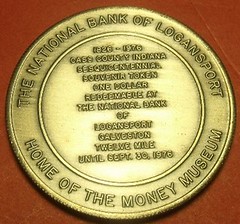 National Bank of Logansport, Money Museum. Fourth Street
and Broadway, Logansport, Indiana. Created by the Logansport Coin
Club. Opened April 19, 1971.
National Bank of Logansport, Money Museum. Fourth Street
and Broadway, Logansport, Indiana. Created by the Logansport Coin
Club. Opened April 19, 1971.
University of Notre Dame Libraries. Department of Special Collections. South Bend, Indiana. Robert H. Gore was a major donor. Louis Jordan, curator.
Iowa
Higgins Museum, Okoboji, Iowa. Formed around the collection of William R. Higgins, Jr. Opened in 1978 with John Hickman, curator. Larry Adams curator 2007 to 2022. George Cuhaj, curator 2023. [Currently Active]
Massachusetts
Colonial Trading Co., 41 Bromfield Street, Boston. They have the Money Museum of Boston on the second floor. [Currently Active]
Harvard, Fogg Museum. 32 Quincy Street, Cambridge, Massachusetts. In 1973, armed robbers overpowered a guard, gained access to the coin room, and took away a safe and loose coins with a value of $5 million. About 6000 Greek and Roman coins were taken. This was described at the time and the largest coin robbery in U. S. history.
Massachusetts Historical Society. Boston. Cornelius Vermeule, curator. Coins did not match the mission of the Society and were secured in bank vaults. Much of their collection, including the Mickley 1804 dollar, was sold through six Stack's auctions in 1970-1976.
Michigan
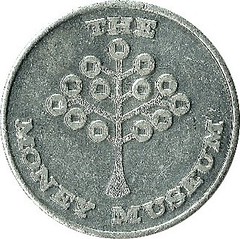 National Bank of Detroit Money Museum, Detroit, Michigan. Featuring the collection of
Nate S. Shapero, Opened April 28, 1960, with Oscar H. Dodson as director; succeeded by
Charles Hoskins.
National Bank of Detroit Money Museum, Detroit, Michigan. Featuring the collection of
Nate S. Shapero, Opened April 28, 1960, with Oscar H. Dodson as director; succeeded by
Charles Hoskins.
Missouri
Federal Reserve Bank of Kansas City, 1 Memorial Drive, Kansas City, Missouri. Includes the Harry S. Truman Collection on loan from the Truman Library. [Currently active]
Federal Reserve Bank of Saint Louis Economy Museum. Broadway and Locust Street. Opened in 2014, closed in March 2020, reopened in 2022.
Kansas City Museum. The Heart of America Coin Club gave money to the museum in 1957 to support a permanent exhibit of coinage. Joseph W. Schmandt donated a 1792 half disme to the Kansas City Museum about 1958. Following a recent inquiry, the museum could find no record of the collection.
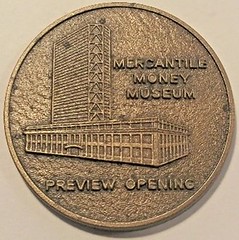 Mercantile Bank Money Museum, St. Louis, Missouri. Featuring
the collection of Eric P. Newman. Opened March 9, 1981. Gene Hessler,
curator 1981-1988.The museum was hosted by an animated figure of
Ben Franklin. [Closed]
Mercantile Bank Money Museum, St. Louis, Missouri. Featuring
the collection of Eric P. Newman. Opened March 9, 1981. Gene Hessler,
curator 1981-1988.The museum was hosted by an animated figure of
Ben Franklin. [Closed]
Ralph Foster Museum at the School of the Ozarks at Point Lookout, Missouri. At one time they had a coin room. John Paul Butler, donor and curator. In December 1980, thieves unscrewed cases and took 76 gold coins with an estimated value of $1 million.
Truman Library. The original collection was donated to the Truman Presidential Library by John Snyder, Secretary of the Treasury in March, 1962. The collection was stolen in November 1962 and never recovered. Collectors donated coins to replace the collection which was presented to Truman on May 6, 1967.
Washington University, Kemper Arts Museum. Eric P. Newman Money Museum. Opened on October 25, 2006, with 3000 square feet of exhibit space. It featured Ben Franklin as a spokesmannequin. The museum was relocated in 2018 to the Olin Library and the Newman Tower of Collections and Exploration. At last report, Ben Franklin is sitting in a closet talking with himself.
MONEY MUSEUMS IN THE U.S., PART TWO
E-Sylum Feature Writer and American Numismatic Biographies author Pete Smith submitted this wonderful compilation of Money Museums in the United States, past and present. Here's the second and final part. An amazing list - while I was at least somewhat familiar with most of these, there are a number I'd missed or forgotten about. Very useful.
Have you visited any of the obsolete museums? Please share your experience with us. -Editor
Nebraska
Boy's Town Philamatic Center. Boys Town was first located in the former home of Byron Reed in Omaha, Nebraska. The Philamatic center opened on July 1, 1951. Although the emphasis is on stamps, they also show numismatic material. Mel Stark, curator 1960-1979. Leo J. Eckert, curator 1979-1984, D. O. Barrett, curator.
Durham Museum. Omaha, Nebraska. Featuring the Byron Reed Collection. The exhibit was mounted by curator Dr. Larry Lee. [Open]
Nevada
Bellagio Hotel, Las Vegas. When I visited the Bellagio Hotel in 2005, they had a money museum with an admission charge. I was unwilling to pay the price of admission.
Columbus Industries, Inc., Reno. Nevada. announced the opening of a money museum in 1988. They were a coin dealer and auction company. The museum was not mentioned again.
Nevada State Museum, Carson City. The museum is in the Carson City Mint building and includes an exhibit of Carson City coinage and some mint equipment. [Open]
New Jersey
Princeton University Library, Numismatic Collection. Louis West, curator after 1944. Alan Stahl, curator after 2004.
New York
American Numismatic Society, Manhattan, New York. Located in Audubon Terrace, Broadway and West 155th in 1904. Moved to Fulton and William Street in 2003. Moved again in 2008 to 75 Varick Street. The collection includes an estimated 800,000 objects. [Currently Active]
Barnum's American Museum, New York City. Broadway and Ann Street. Owned by P. T. Barnum who acquired Scudder's American Museum in 1841. The Museum was destroyed by fire on July 13, 1865.
Chase Manhattan Bank Money Museum, Rockefeller Center, Manhattan, New York. The collection was formed by Farran Zerbe who created temporary exhibits at world's fairs and expositions; the museum was established in 1929, closed in 1973; donated to the Smithsonian Institution. Vernon Brown, curator, retired in 1963. Gene Hessler, curator 1967-1973.
Museum of American Finance, 48 Wall Street, Manhattan. Affiliated with the Smithsonian Institution. Exhibits include stocks and bonds but do not include coins or paper money. The building was damaged by flooding in 2018 but the exhibits survived.
New-York Historical Society. 170 Central Park West, New York City. Founded in 1804, they claim to be New York's oldest museum. That is a statement to which the Tammany Society Museum might take exception. They acquired the John C. Kunze collection from his widow in 1818. A few years later, the collection was stolen, leaving only the empty cabinet. Recently, in 2013, they had the 1933 Double Eagle on display there. {Currently Active]
Riley's Fifth Ward Museum Hotel, New York City. 94 Broadway. Formed by Thomas Tiley. Opened in 1826. The collection was sold at auction in 1864.
Tammany Society Museum, New York City. Situated in the Exchange building in 1793. Collection formed by Gardner Baker. It included several hundred coins and medals. On April 20, 1796, a glass case was broken and silver coins were taken, the second theft from the museum. This made Baker the first victim of a numismatic theft in America. [Closed]
North Carolina
Mint Museum, Charlotte, North Carolina. Despite its name, this is an art museum without numismatic exhibits.
Ohio
Federal Reserve Bank of Cleveland, Learning Center and Money Museum, Superior and East Sixth Street, Cleveland, Ohio. Closed September 11, 2001; reopened on January 3, 2005. [Currently Active]
Western Museum, Cincinnati. Opened in 1820 as a natural science museum. It included coins on exhibit. [Closed]
Pennsylvania
American Philosophical Society, American Museum. Pierre Eugene Du Simitiere was owner and curator 1776 to 1781. After his 1784 death, the contents of the museum were sold by a 1785 broadside in what may be the first American auction of a coin collection.
First Bank of the United States, Philadelphia. The building is undergoing a 22.2 million dollar renovation project. It is scheduled to reopen as a money museum in 2026.
Independence National Historical Park. Congress Hall. Frank Stewart transferred the
Old Mint Collection
to Congress Hall on October 22, 1914, with the understanding that the
collection would be exhibited indefinitely. Some items were transferred to the Fourth
Philadelphia Mint in 1969.
Peale's Philadelphia Museum, Philadelphia. Established by Charles Willson Peale. Situated on the second floor of Independence Hall in 1802. The Peale family sold the museum in 1849. [Closed]
Philadelphia Mint, Mint Cabinet. Adam Eckfeldt established the Mint cabinet in 1838, setting aside coinage returned to the Mint and restriking coins missing from the collection. The Mint created an exhibit with 7000 coins and 2000 medals for the Columbian Exposition. The cases were returned to Philadelphia and installed at the Mint. William Ewing DuBois, curator 1838-1881. Robert A. McClure, curator 1881-1902. T. Louis Comparette, curator 1905-1922. In 1923 the Mint Cabinet was transferred to Washington D.C. and the National Numismatic Collection. [Closed]
The Fourth Philadelphia Mint has a small exhibit area at the mezzanine level. The lobby includes the Tiffany mosaics from the Third Philadelphia Mint. The Mint has unfortunate errors interpreting the history of the Mint.
Pittsburgh, Carnegie Museum. They had, at one time, more than 200,000 coins including the Clapp large cents. William W. Woodside, curator.
Tennessee
Union Planters National Bank Money Museum, 100 North Main, Memphis, Tennessee. Opened May 1, 1969. Featuring the collection of P.(owell) B.(inford) Trotter. Helen Williams, curator.
Virginia
Federal Reserve Bank of Richmond Money Museum. Permanently closed in Spring of 2023.
Wisconsin
Fred W. Harris Money Museum, Wisconsin Dells, Wisconsin. Described as the world's largest portable money museum. Exhibited in various forms in the 1930's, it was described as more diverse than the Chase Bank Museum. Reverend Harris died in 1938. His collection was sold at auction by Bolender in 1940. [Closed]
To read the earlier E-Sylum articles, see:
SHAPERO, DODSON AND THEIR MONEY MUSEUM
(https://www.coinbooks.org/v26/esylum_v26n48a20.html)
CHASE MANHATTAN MUSEUM BRENNER EXHIBIT
(https://www.coinbooks.org/v26/esylum_v26n48a21.html)
DAVID SCHENKMAN INTERVIEW, PART FIVE
Greg Bennick's latest interview for the Newman Numismatic Portal is with token expert David Schenkman. Here's the fifth of six parts, where Dave and Greg discuss rarity and the mind of a collector. -Editor
Greg Bennick: So in terms of rarity, not necessarily connecting rarity with which might be your favorite, do you have favorite pieces that you've collected over the years. Out of all the tokens that have passed through your hands, and of course, your time writing for Numismatic News and The Numismatist and all, or are there any specific tokens that have fallen under your collection that are your standout favorites. Ones that you can think of off the top of your head that were just the ones that you remember above all others.
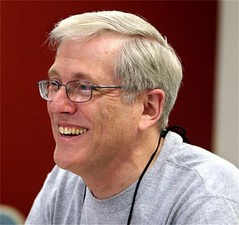 David Schenkman: We'd have to do a separate interview for that! (laughter) I think that my
favorites changed, and I think as much as anything, it depends on what I'm working on. If I'm
working on an article or a book, I tend to concentrate on that more. And maybe those are my
favorite, as I say, I tend to lose interest in something when I'm done with it. I wrote a catalog of
Civil War sutler tokens, and those were tokens used by the merchants who traveled with the
soldiers and sold goods. And I had my collection which numbered about 400 pieces. And I got
to the point that I was maybe finding one more a year because I had most of them and I lost
interest because I wasn't finding them. I think that if you're looking for something that's your
goal and when you find it, it's no longer your goal so then your goal becomes something else.
David Schenkman: We'd have to do a separate interview for that! (laughter) I think that my
favorites changed, and I think as much as anything, it depends on what I'm working on. If I'm
working on an article or a book, I tend to concentrate on that more. And maybe those are my
favorite, as I say, I tend to lose interest in something when I'm done with it. I wrote a catalog of
Civil War sutler tokens, and those were tokens used by the merchants who traveled with the
soldiers and sold goods. And I had my collection which numbered about 400 pieces. And I got
to the point that I was maybe finding one more a year because I had most of them and I lost
interest because I wasn't finding them. I think that if you're looking for something that's your
goal and when you find it, it's no longer your goal so then your goal becomes something else.
Greg Bennick: I could totally see that. And at the same time I can imagine celebrating and being so excited about the acquisition or the find that you celebrate it for a while. But there's definitely in the collector mindset, and I've talked in other interviews about the collector mindset: what makes us collectors. What is it about our brains or about our approach to the world that makes us want to acquire or appreciate numismatic items, for example? And I'm fascinated and would love to write a book, I think on just that alone, the psychology of the collector. But there's something about us that once we acquire something, we're both satisfied and then we're on to the next thing, which is seemingly what you're saying about you write the book, you've completed that thing. Okay, now what's next?
David Schenkman: Well, that's true. And you never get them all. This book that I've just finished, I finished the catalog. I'm close to having it published and on obsolete currency relating to coal mining. And just last month a note popped up that I didn't know existed from a coal and canal company in Pennsylvania from the 1830s as I remember. The note cost me a couple of hundred dollars. I don't even remember what, but I didn't even know it existed and there was something I added to the book after the fact. So I'm sure something else will pop up after the book is published.
Greg Bennick: It's just incredible that the body of information is still unfolding even as we speak. That's inspiring because it means that not just the so-called experts can make finds and define the hobby, but that individuals might do that work as well, which is really inspiring for anybody out there aspiring to collect something new and different, like tokens and medals and or counterstamps, hard rubber tokens, and the other things we've talked about.
David Schenkman: Well, that's true. And I think, of course, the internet has just opened it up because nobody lives in a vacuum anymore. So it's been a good thing and maybe a bad thing in some ways, but it certainly has brought out a lot of things that previously people didn't know existed.
Greg Bennick: Well, and case in point, you know, with the Sprague and Blodgett counterstamp that I purchased, certainly I never would have been able to do the research as quickly and efficiently as I did the other night at one in the morning with Google finding all this information about this obscure piece that had arrived in the mail that day. So, it's just endlessly interesting, especially when we've got a focused point for our research.
David Schenkman: I remember the first books I wrote I did on an IBM Selectric typewriter.
Greg Bennick: Amazing.
David Schenkman: Can you imagine how many pages I changed and re-changed? I had to find errors before word processing.
Greg Bennick: I can't even imagine. Like you're looking over the page and you realize that you forgot a comma and therefore you have to retype the entire page. (laughter) One thing we didn't discuss at all and I just want to make sure that we touch on it, we talked about tokens and counterstamps and we talked about civil war tokens and all sorts of things, but we didn't talk about medals at all. And I've been kind of interested in medals recently because while I don't know much about them, when I'm walking around coin shows, wherever that happens to be, Baltimore, Long Beach, what have you, and I noticed medals these days, I'm looking at them now from a different mindset now that I've gotten interested in counterstamps and the history connected to specific counterstamps, for example. And what I like about medals is that sometimes medals are engraved with the names of the recipients, and you can learn about the recipients of those medals and make connections that way. What could you tell us about medals and the collecting of them that interests you?
David Schenkman: Well, most people, I think, collect medals by topic as much as anything, and there's so many different kinds of medals. I don't collect medals generally, although I collect or did collect - I have them still - but I've got a full set of official British coronation medals from 1603 on to the 1935, which was the last one…37, I guess. I collected them and I still have them, but I don't collect them anymore because I have them all. But that's a topic.
I
have on my desk, and as you mentioned medals, I'm holding it in my hand, a medal that I just
found, and it's a two-and-a-half inch brass medal, and it's issued from Buenos Aires, Argentina,
in 1928 to commemorate a visit of Herbert Hoover, who visited there in December of 1928.
This is a very beautiful medal. It probably doesn't have a lot of value. I can't imagine that it's
worth $100. It's probably worth a lot less. I don't know how rare it is, but I was able to do some
quick research and it will probably be the topic of a column. I write a monthly column for The
Numismatist on tokens and medals. And so, I'm constantly looking for items to write about.
I look at an item like this and say, Okay, can I write a thousand words about this?
And that's
my criteria. And this one probably I can. Once I've written it, I don't have any interest in the
medal, but right now I'm interested in the information I can find about the medal. I'll buy an
item like this just to write a column about it, and then I'll get rid of it because you can't
collect… I collect certain things that are not tokens. I collect selectively colonial coins and I
also collect colonial currency, but only certain things. I collect a little bit. I have a full date set
of bust half dollars of the 1807 through 1836 type and various other things like that that I've had
an interest in.
Greg Bennick: That's great. I'm actually quite similar. As I mentioned in a few of these interviews, I focus on error coins, but I've got a building set of Standing Liberty quarters and then a set of Indian heads and Flying Eagle cents, and I just love that aspect of all this too. So this is really been fantastic talking to you, just hearing the other side of the coin world, in essence. And that oftentimes what we hear about are date sets and then to hear from you about all these different areas of numismatics and like medals, for example, you know, issued as commemoratives for Herbert Hoover's visit. But then also like I mentioned, there's countless medals that were issued to specific people to celebrate an experience or an achievement. There's just so many ways to put your interest in coins in the hobby. It's just endless.
David Schenkman: Yeah, it really is endless. I own a company that specializes in selling banjos of all things. (laughter) I know, don't laugh.
Greg Bennick: I love it! I'm excited you brought it up because I went on your banjo site the other night and was amazed by it. So please feel free to let us know where to find that and tell us more.
David Schenkman: Well, I wasn't going to give a pitch for banjos, but I collect numismatic items relating to banjos. I have a couple of engraved coins, and I've written columns about some of these. One lady banjo player, and it's on a half dollar as I remember, and I have other ones. I have even love tokens engraved with banjos. So, your collection can take so many twists and turns and you never know where the next turn is going to be, and that's part of the fascination.
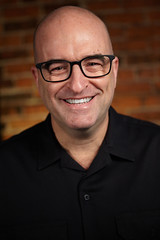 About the Interviewer
About the Interviewer
Greg Bennick (www.gregbennick.com) is a keynote speaker and long time coin collector with a focus on major mint error coins. Have ideas for other interviewees? Contact him anytime on the web or via instagram @minterrors.
To watch the complete video, see:
David Schenkman Interview
(https://nnp.wustl.edu/library/book/632911)
To read the complete transcript, see:
David Schenkman Interview (Transcript)
(https://nnp.wustl.edu/library/book/632910)
To read the earlier E-Sylum articles, see:
DAVID SCHENKMAN INTERVIEW, PART ONE
(https://www.coinbooks.org/v26/esylum_v26n45a12.html)
DAVID SCHENKMAN INTERVIEW, PART TWO
(https://www.coinbooks.org/v26/esylum_v26n46a16.html)
DAVID SCHENKMAN INTERVIEW, PART THREE
(https://www.coinbooks.org/v26/esylum_v26n47a19.html)
DAVID SCHENKMAN INTERVIEW, PART FOUR
(https://www.coinbooks.org/v26/esylum_v26n48a23.html)
NUMISMAGRAM MEDAL SELECTIONS: DECEMBER 3, 2023
Jeremy Bostwick with Numismagram sent along these four medals from his most recent upload of new material to his site. For all of the new items, please visit https://www.numismagram.com/inventory. -Editor
102602 | GERMANY. Nürnberg. Silver Großer Kerzendreier (3 Pfennig Baptismal Token). Issued circa 1700 (27mm, 3.54 g, 12h). By G. F. Nürnberger. MAGNVS IN PARVO (mighty yet humble), facing radiant personification of the sun // LVX IN TENEBRIS (light in darkness), radiant infant Jesus Christ lying in manger; partial ruins in background to left; above, radiant Star of Bethlehem showing downward through the clouds. Fenzlein 597; Erlanger Coll. 963. Choice Mint State. Lightly toned, with great brilliance in the fields. $365.
Georg Friedrich Nürnberger was a prolific late 17th/early 18th century coiner and medalist in the city which shared his name, with baptismal-related coins, medals, and tokens serving an important role in his mint's offerings. For more wealthy families, gold ducat klippes, as well as their fractions, stood as keepsakes intended for the parents and godparents of a newly-baptised child. For those of more modest means, tokens such as this "Kerzendreier," literally "three candlesticks," possibly served a similar role. It is still not fully known if these silver issues were produced by Nürnberger's roller dies as direct gifts, similar to the gold medallic ducats, or as a pseudo-ecclesiastic medium of exchange, whereby a token could be used to purchase a candle from the church (candles being a common gift given to the child's parents and godparents). Given that the candles at the time cost 1 kreuzer (or 3 pfennig), the name of "three candlesticks" may have become the common slang, with the three indicating the 3 pfennig cost for the candlestick thus purchased.
To read the complete item description, see:
102602 | GERMANY. Nürnberg. Silver Kerzendreier (3 Pfennig Baptismal Token).
(https://www.numismagram.com/product-page/102602)
102618 | GREAT BRITAIN. International Exhibition bronze Award Medal. Engraved and awarded to John Frederick Bateman, fellow of the Royal Society, in 1862 for the exhibition in South Kensington, London (76mm, 217.63 g, 12h). By L. C. Wyon (after D. Maclise) for Pinches. Britannia seated left, receiving female personifications of Industry, Science, and Agriculture, along with their attributes; to right, three muses personifying the Arts; below in foreground, lion crouching left, clutching trident in forepaws // 1862 / LONDINI / HONORIS / CAUSA in four lines within garlanded oak wreath. Edge: J. F. BATEMAN, F. R. S., JUROR. CLASS VIII. BHM 2747; Eimer 1553. Gem Mint State. Rich, glossy brown surfaces, with brilliance in the fields and great relief. Includes original box of issue, though somewhat distressed. $395.
The Great London Exposition was held in the South Kensington area of London from 1 May–1 November 1862, and featured exhibitors from 36 countries covering areas of industry, technology, and the arts. Queen Victoria, still in mourning for the loss of her husband the previous December, was not in attendance for the opening of the event which would see over six million attendants throughout its six months. Works of note on display were a refrigerator capable of producing ice, the Bessemer process for the manufacture of steel, and Charles Babbage's analytical engine–an early form of a computer.
One of the most consequential civil engineers of his era, John Frederick Bateman was responsible for much of the modern water supply in the United Kingdom, becoming known as the "greatest dam-builder of his generation." Outside of his native UK, he also designed and constructed water supply systems in Buenos Aires, Naples, Constantinople, and Colombo.
To read the complete item description, see:
102618 | GREAT BRITAIN. International Exhibition bronze Award Medal.
(https://www.numismagram.com/product-page/102618)
102598 | GERMANY & the ENTENTE. Pact of Malice cast bronze Medal. Dated 1915. "Der Bund der Tücke"—on Germany's fight against the "union of deceit" (82mm, 145.23 g, 12h). By K. Goetz in München. DER BVND DER TVECKE (the bond of malice), winged fantastic beast standing right, with numerous allegorical, elongated, serpentine/hydra-like heads: cock (for France), lion (for Belgium and England), bear (for Russia), Snake (for Serbia), and dragon (for Japan); below, figure, nude but for Bersagliere hat, seated with back to viewer, suckling from the beast's teats (an allegory for Italy, as Romulus/Remus suckling the she wolf); MCMXV below // Facing bust of God, holding scythe and resting hand upon and globe; flames of Hell below; across central field in three lines, SCHLAGT IHN TOT! / DAS WELTGERIGHT / FRAGT EVCH NACH DEN / GRVENDEN NICHT! ("Strike him dead! Doomsday asks you not on what grounds" –Heinrich von Kleist). Edge: Plain. Kienast 160; Klose 8.8; Art of Devastation –; Mint State. Somewhat mottled brown surfaces, with just a slight degree of rub upon the highest points. Compare to a somewhat nicer piece, graded NGC MS-65 Brown, that realized a total of $1,920 in Heritage auction 61296, lot 22069. $1,095.
Similar to many of Goetz's World War I-era medals, this particular piece—issued in a much larger format than is generally encountered—portrays Germany against seemingly the rest of the world. Here, Goetz sees Germany's then-enemies as this fantastic beast amalgamated from the various allegories associated with them. Meanwhile, on the reverse, the stark aspect of the war, and seemingly the divine right for the Germans, is displayed by the representation of God, holding a scythe and the globe—an indication of His power to smite the enemy and His terrestrial rule. The quote from Heinrich von Kleist merely reinforces that aspect that much more, in the sentiment to "...strike him dead! Doomsday asks you not on what grounds." A haunting and extremely powerful work from the ever-ambitious Goetz.
To read the complete item description, see:
102598 | GERMANY & the ENTENTE. Pact of Malice cast bronze Medal.
(https://www.numismagram.com/product-page/102598)
102627 | SWEDEN. "Vindarnas lek" silver Vide Poche or Medallic Plate.
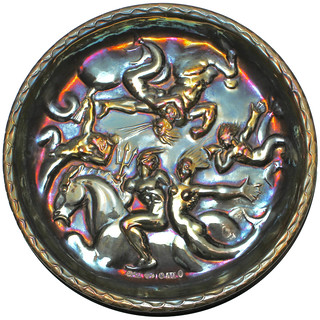 Issued 1951 (130mm, 115.60 g). By C. Milles for Guldsmedsaktiebolaget. "The Playfulness of the Winds"—Nude male, holding trident and seizing nude mermaid, riding left on hippocamp; Triton in pursuit to right; opposite above and to left, ichthyocentaur left, being wrestled and pursued by two Tritons; hallmarks: G•A•B, three crowns, S, crowned head, A9, amphora // Plain, with blackened tin backing. As made. Most attractively toned, with hues of cobalt mixed with some burgundy and magenta. $185.
Issued 1951 (130mm, 115.60 g). By C. Milles for Guldsmedsaktiebolaget. "The Playfulness of the Winds"—Nude male, holding trident and seizing nude mermaid, riding left on hippocamp; Triton in pursuit to right; opposite above and to left, ichthyocentaur left, being wrestled and pursued by two Tritons; hallmarks: G•A•B, three crowns, S, crowned head, A9, amphora // Plain, with blackened tin backing. As made. Most attractively toned, with hues of cobalt mixed with some burgundy and magenta. $185.
Known for figurative sculptures and large-scale fountains, Carl Milles was one of Sweden's most prominent artists. In addition to his other media, Milles also designed a number of medals capturing his sculpted, very modern style. In particular, this design appears at least somewhat inspired by his "Europa och Tjuren," a multi-sculpture fountain in Halmstad, Sweden, with Europa being snatched away by Zeus in the form of a bull.
To read the complete item description, see:
102627 | SWEDEN. "Vindarnas lek" silver Vide Poche or Medallic Plate.
(https://www.numismagram.com/product-page/102627)
ANS CANADIAN TOKEN SALE
The ANS is selling a collection of Canadian tokens this week. Here's the press release. -Editor
Heritage Auctions Sale of Canadian Tokens to Benefit the ANS
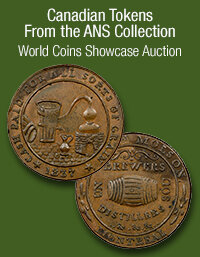 The American Numismatic Society is pleased to announce that a notable collection of 19th and 20th century Canadian tokens will be offered at a showcase auction held by Heritage Auctions on December 4, 2023, for the benefit of the Society. The tokens are all duplicates of specimens from the Society. The entire proceeds of this significant sale will go to the Newell Fund, which allows the ANS to continue acquiring important objects while also providing funds to support collections management.
The American Numismatic Society is pleased to announce that a notable collection of 19th and 20th century Canadian tokens will be offered at a showcase auction held by Heritage Auctions on December 4, 2023, for the benefit of the Society. The tokens are all duplicates of specimens from the Society. The entire proceeds of this significant sale will go to the Newell Fund, which allows the ANS to continue acquiring important objects while also providing funds to support collections management.
The auction will offer 171 lots of over one thousand Canadian tokens, with excellent specimens coming from Newfoundland, New Brunswick, Upper and Lower Canada, and the Wellington and Blacksmith series. Many of the tokens were donated by the Norweb Family – in particular Mrs. Emily May Norweb and Ambassador Raymond Henry Norweb, Sr., who were major benefactors of the ANS and contributed a large number of coins to the Society, including the famed Brasher Doubloon. Their collection of American and European coins and tokens was one of the greatest collections of the 20th century. Other tokens from the auction—some of which have been off the market for over a century—are pedigreed to several prominent Canadian numismatists, including A.B. Baird, Alfred Z. Reed, P.O. Tremblay, and W.R. Powell.
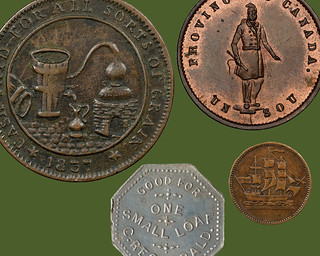 On the sale, ANS Executive Director Dr. Gilles Bransbourg said,
On the sale, ANS Executive Director Dr. Gilles Bransbourg said, We are very grateful to Heritage Auctions for their long standing support and friendship with the ANS, for offering this important collection of Canadian tokens and providing outstanding cataloging and photography for the auction which will greatly benefit our research and educational mission.
ANS members and friends are invited to support the Society through participating in the auction: for more information, please visit the auction overview page from Heritage Auctions. The live session will begin at 7:00 PM Central Time on December 4.
To read the complete article, see:
2023 December 4 Canadian Tokens from the ANS and Norweb Collections World Coins Showcase Auction #61354
(https://coins.ha.com/c/auction-home.zx?saleNo=61354&ic=breadcrumb-coins-121913-interior)
NUMISMATIC NUGGETS: DECEMBER 3, 2023
Here's a selection of interesting or unusual items I came across in the marketplace this week. Tell us what you think of some of these. -Editor
1701 William III Five-Guineas
NGC AU | William III (1694-1701), 'Fine-Work' Five-Guineas, 1701 DECIMO TERTIO, "Ornamental Sceptres" Type, second laureate head right, rev. crowned shields cruciform, ornamented sceptres in angles, + •+ DECVS • ET • TVTAMEN • ANNO • REGNI • DECIMO • TERTIO upwards on edge, 41.64g [642.60grns], 5h (MCE 172; Schneider II, 481; EGC 401; Holloway GH 62; Stratos -; King 139; Spink 3456), a small rim bruise by V of GVLIELMVS, adjustment marks to cheek and scant traces of graffito before bust, lightly wiped but residually brilliant, a handsomely bold very fine / almost extremely fine, in NGC 'St. Helier' QR holder, graded AU Details ~ Obverse Graffiti / Cleaned (Cert. #6767923-003)
From the upcoming Spink St Helier Collection of English Gold Coins sale. -Editor
To read the complete lot description, see:
NGC AU | WILLIAM III (1694-1701), 'FINE-WORK' FIVE-GUINEAS, 1701 DECIMO TERTIO, "ORNAMENTAL SCE...
(https://live.spink.com/lots/view/4-C1K4Y4/ngc-au-william-iii-1694-1701-fine-work-five-guineas-1701-decimo-tertio-ornamental-sce)
St. Louis Agricultural Medal
[AGRICULTURE]. St. Louis Agricultural and Mechanical Association silver presentation medal. Ca 1870s.
2 3/4 in. diam. silver medal (nicking to edges, some surface scratching and tarnishing). Housed in a Union case [Berg 1-89] (nicking to edges, top hinge a bit loose). Medal obverse features a woman holding a scythe and cornucopia, with livestock and farm implements in a field behind her. Legend reads, "St. Louis Agricultural and Mechanical Association." Reverse features an eagle holding agricultural implements in its talons along with a large wreath encircling blank space for awardee information to be engraved. Eagle carries a banner in its beak reading, "Awarded To." Legend reads, "Industry Brings Plenty." This lot is located in Cincinnati.
Nice unawarded medal with a great agricultural scene and original case. -Editor
To read the complete lot description, see:
[AGRICULTURE]. St. Louis Agricultural and Mechanical Association silver presentation medal. Ca 1870s.
(https://hindmanauctions.com/items/10687353-agriculture-st-louis-agricultural-and-mechanical-association-silver-presentation-medal-ca-1870s)
Scottish Communion Tokens
28 X DUNDEE RELATED CHURCH TOKENS, TO INCLUDE: ST PAULS FREE CHURCH 1850, HILLTOWN FREE CHURCH 1843, MCCHEYNE MEMORIAL, ETC
This auction lot is a nice collection of Scottish Communion tokens. -Editor
To read the complete lot description, see:
28 X DUNDEE RELATED CHURCH TOKENS, TO INCLUDE: ST PAULS FRE...
(https://www.easyliveauction.com/catalogue/lot/
2371d4f738d8e7b68fca8f3bcb30de21/1d1a277ad69c95ade095108b55d35583/
december-auction-paintings-
furniture-porcelain-col-lot-2231/)
1882 Arizona Silver Ingot
Button shaped silver ingot marked: Arizona / A. F. E. / 1882. 21 mm in diameter; 7 mm thick; 20.3 grams. Arizona
From the upcoming Holabird Americana sale. See the article on a Denver Mint silver ingot elsewhere in this issue. -Editor
To read the complete lot description, see:
Arizona Silver Ingot: A. F. E. 1882 [175817]
(https://holabirdamericana.liveauctiongroup.com/Arizona-Silver-Ingot-A-F-E-1882-175817_i50998009?t=CC2)
Shepard Fairey's Obey Money Art
Shepard Fairey (Obey Giant) –Two sides of capitalism
Screen printed banknote
3.1 x 5.5 in / 8 x 14 cm
Signed and Dated by Shepard Fairey (Obey Giant)
This includes Two Banknotes
Interesting money art I hadn't encountered before, one in the form of a banknote, the other a stock certificate. -Editor
For more information about the artist, see:
https://obeygiant.com/
To read the complete lot description, see:
Obey (1970) - Two sides of capitalism
(https://www.catawiki.com/en/l/77085725)
MORE ON ROMAN EMPEROR ELAGABALUS
The Conversation is a nonprofit that recruits academics to write balanced articles getting at the truth of various topics making the rounds. This one examines the recent claim about emperor Elagabalus discussed last week. Here's an excerpt - see the complete article online. -Editor
Elagabalus ruled as Roman emperor for just four years before being murdered in AD 222. He was still a teenager when he died. Despite his short reign, Elagabalus is counted among the most infamous of Roman emperors, often listed alongside Caligula and Nero.
Based on this quote, North Hertfordshire Museum has reclassified Elagabalus as a transgender woman, and will now use the pronouns she/her. The museum has a single coin depicting Elagabalus, which is sometimes displayed along with other LGBTQ+ artefacts from their collection.
When writing about ancient subjects, from emperors to slaves, the first question historians have to ask is: how do we know what we do? Most of our written sources are fragmentary, incomplete and rarely contemporary, amounting to little more than gossip or hearsay at best, malign propaganda at worst. It's rare that we have a figure's own words to guide us.
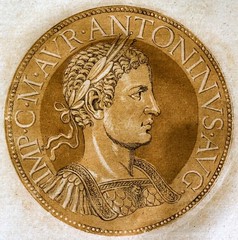 Elagabalus is no exception. For Elagabalus, our principle source is the Roman historian Cassius Dio. A senator and politician before turning his hand to history, Dio was not only a contemporary of the emperor, but part of his regime.
Elagabalus is no exception. For Elagabalus, our principle source is the Roman historian Cassius Dio. A senator and politician before turning his hand to history, Dio was not only a contemporary of the emperor, but part of his regime.
However, Dio wrote his Roman history under the patronage of Elagabalus' cousin, Severus Alexander. He took the throne following Elagabalus's assassination. It was therefore in Dio's interest to paint his patron's predecessor in a bad light.
Sexual slurs were always among the first insults thrown by Roman authors. Julius Caesar was accused of being penetrated by the Bithynian king so many times it earned him the nickname the Queen of Bithynia
.
While the Romans clearly engaged in acts that we today consider gay or straight sex, they would not recognise the sexual orientations we associate with them. The ancient Romans did not share the same conceptions of sexuality that we do.
We cannot retroactively apply such modern, western identities to the inhabitants of the past and we must be careful not to misgender or misidentify them – especially if our only evidence for how they might have identified comes from hostile writers.
To read the complete article, see:
Museum classifies Roman emperor as trans – but modern labels oversimplify ancient gender identities
(https://theconversation.com/museum-classifies-roman-emperor-as-trans-but-modern-labels-oversimplify-ancient-gender-identities-218643)
To read a CoinsWeekly article on the topic, see:
https://new.coinsweekly.com/news-en/elagabalus-new-transgender-identity-and-its-consequences-on-the-coin-trade/
To read the earlier E-Sylum article, see:
MUSEUM RECLASSIFIES EMPEROR ELAGABALUS
(https://www.coinbooks.org/v26/esylum_v26n48a27.html)
THE CLASSIC LINCOLN CENT
In an email to clients ahead of the Davisson's E-Auction 48, Allan Davisson discussed the classic Lincoln cent. -Editor
E-Auction 48 closes next week on Wednesday, December 6th! Lots begin closing at 10 a.m. U.S. Central Time. A carefully curated 333 lots, do take a look! And read on as Allan discusses a classic starting point for countless collectors – the Lincoln cent.
In many respects, it is a humble coin, the smallest bit of change still in circulation. Though its production is seen by many as no longer necessary, the US Mint continues to provide pennies. In the first half of this year, the Philadelphia and Denver mints produced nearly a half billion of the pieces. (Canada stopped minting pennies in 2012.)
It may be humble
but it is still in demand. The pieces offered in this catalog—attractive and minty
high grade pieces including a couple of the major rarities, as well as a Whitman album (Lot 323) with all but two of the slots filled, are from a collection formed by a collector with a particular appreciation for 20th century American coins. Cataloging and offering these pieces took me back many years to my own early collecting. Fascinated as I was with pennies when I was young, I saw hardly any early coins of this caliber and I never handled a 1955/55 double-die penny until this one.
Teddy Roosevelt, president at the inception of the Lincoln penny, took an active interest in its design in 1909, a hundred years after the birth of Lincoln in an era where many Lincoln-related medals and memorials were issued. A portrait on a plaque by Victor Renner that Roosevelt saw and liked became the portrait for the coin, and a pair of wheat sheaves on the reverse symbolized American agriculture with wheat as a classical representation of life and order.
The Lincoln cent will be 125 years old in 2024—225 years after the birth of Abraham Lincoln. For many of us whose coin collecting enthusiasm go back to childhood, this was a coin that helped start us out. It was an inexpensive way to fill a folder with slots for each date and mint and a source of excitement when an empty slot could be filled by a coin out of a roll of pennies from the bank or the pocket-change of a parent or relative.
Until World War II pennies were struck in bronze (95% copper) but the demand for copper for the war effort led to zinc-covered steel for the 1943 issues. Gun cartridge cases were melted down for pennies from 1944 to 1946. Since then, different copper alloys were used until copper-plated zinc became standard in 1982.
Some references comment that Lincoln pennies remain the most actively collected series of coins in all of numismatics. Perhaps so—there is something about this humble, long-lived coin that speaks to youthful enthusiasm but also to the long and rich history of a coin that has seen immense historic change.
Lot 323, 101 different cents dated from 1909 VDB to 1945-S in a Whitman Classic coin album
It's true - the Lincoln Cent is how most numismatists of my generation got their introduction to the hobby. I still have my Whitman folders! -Editor
For more information, or to bid, see:
https://davcoin.com/sale/E-Auction%2048
THE BOOK BAZARRE
DICKIN MEDAL 80TH ANNIVERSARY
This BBC News article on the 80th anniversary of the Dickin Medal discusses recipient Gustav, a pigeon that flew the first message back on D-Day. -Editor
A pigeon that flew the first message back on D-Day has been remembered 80 years after service animals were first officially honoured in Britain.
Gustav, from Portsmouth, flew over 150 miles (240km) in five hours and 16 minutes from the shores of Normandy to his wartime base on Thorney Island.
He received the animal equivalent of the Victoria Cross, the Dickin Medal.
It was first given on 2 December 1943 by the People's Dispensary for Sick Animals (PDSA) founder Maria Dickin.
Each medallion bears the words "For Gallantry" and "We Also Serve" within a laurel wreath.
In 1938, Mr Jackson and many other pigeon owners across the country formed the National Pigeon Service (NPS), a volunteer civilian organisation which provided messenger birds for the war.
His granddaughter Carolyn Mason, from Portsmouth, said her grandfather was given pigeons for company after he was widowed at 39 years old.
She said "his life was his pigeons" and he would have been so proud that Gustav and his medal were still remembered.
Andrew Whitmarsh, curator at the D-Day Story museum in Southsea, said: "There was radio silence for security reasons, so Gustav's message was the first news of D-Day that arrived back in the UK.
Gustav was awarded his medal by Mrs A. V. Alexander, wife of the First Lord of the Admiralty and Wing Commander Rayner, in a ceremony in November 1944.
"We're proud and very honoured to present this and to remember all of the animals that served over the last 80 years."
To read the complete article, see:
Heroic D-Day pigeon from Portsmouth remembered on Dickin Medal 80th anniversary
(https://www.bbc.com/news/uk-england-hampshire-67371619)
DENVER MINT SILVER INGOT OFFERED
A January 11th, 2024 auction by Las Vegas dealer VCD Auctions offers a rare Denver Mint silver ingot. Here's an excerpt of the lot description. -Editor
The United State Denver Mint Ingot
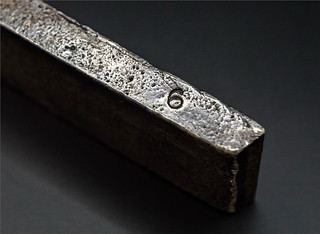 This
This Denver Ruler Ingot
, discussed here, is only the second known example of a United States Mint Denver Assay Silver Ingot. The other known Denver Assay Silver specimen is discussed below as is the one other Ruler Ingot
known which is a Mint of the United States Philadelphia piece. However, with that being said, they are far from equal as the Denver ingot is in a known total population of two (2) while there are at least fifty-five (55) Philadelphia ingots known as noted in Ken Conaway's registry. Being this specimen is not only a rare style Ruler Ingot
and in addition a silver ingot with a United States Denver Hallmark (government mintmark) shown below. This museum quality specimen is virtually the Holy Grail
of known Mint of the United States ingots. Some historians would classify the Mint of the United States Denver Ruler Ingot
as a Strip Cast Sheared Silver Ingot but according to Ken Conaway and Steve Austin it is more likely actual bar stock rolling method of production.
The first and other known example of a Denver Mint silver ingot was placed by Kagin's Incorporated in the United States Government Silver Ingot Collection of Ken Conaway.
Since Ken's acquisition, he discovered that his ingot was first owned by Dr. Philip W. Whiteley from Denver where it was confirmed by him to be the only Denver Mint silver ingot privately held. From Dr. Whiteley, the Mint of The United States Denver silver ingot was sold to Clarence Criswell where it was held until the 1984 ANA Convention Auction by Kurt R. Kruger in Detroit, Michigan
. (Ken Conaway)
Mint Of The United States Denver silver ingot is pictured below; no serial number, 11.64 ozs 999 3/4 Fine, ex- Dr. Philip W. Whiteley collection, ex- Clarence Criswell collection. The hallmark is identical to those found on Mint of The United States Denver gold ingots dated between 1948 and 1954. (Ken Conaway)
The Mint at Denver opened for business in late 1863 as a United States Assay Office. It was established the year earlier by an Act of Congress on April 21, 1862. Located at 16th and Market Streets and acquired by the government for $25,000 from Clark, Gruber and Company. During the Pikes Peak Gold Rush, the men of Clark, Gruber and Company coined gold and gold dust brought from the gold rich areas by the local miners. For almost three years, they minted gold coins (1860–61) and ingots (1862).
The yearly value of the gold and silver deposited within the Denver Assay Office was estimated to have been 5.6 million by 1859. There was new hope for branch mint status when Congress provided for the establishment of a mint at Denver for gold and silver coin production. The new striking mint was located at West Colfax and Delaware streets. It was purchased on April 22, 1896, for approximately $60,000 and construction began in 1897. After multiple delays due to funding and other hurdles the Denver Mint's opening was delayed once more due the new minting machinery, presses etc. to be used at the Denver Mint were first sent to the St. Louis Exposition of 1904 for exhibit. On February 1, 1906 the Denver Mint struck it first coins for release to the public, making the Denver Mint facility become a Branch Mint. Thus, in 1906, gold coins were again minted in Denver and, for the first time, silver coins were also produced there. The silver and gold came mostly from the Cripple Creek mining district of historic lore. From that time, until the final gold coins were struck in 1931, the Denver Mint struck a variety of gold coins, but the $20 Double Eagles, which were primarily minted for banking settlements and international transactions were the key pieces of the time.
The United State Denver Mint Ingot
Length 13 inch
Width 1 7/16th inches
Thickness 7/16th inch
Hallmark
Width 13/16th inch
Height 1/2 inch
Number 6
Weight 40.2 oz
Marked Purity 999.75
Interesting item and pedigree. Anyone have a copy of the 1984 ANA sale catalog? -Editor
To read the complete lot description, see:
Exceedingly Rare, Only Available Denver Mint Assay Bar / Silver Poured Ingot
(https://bidnow.vegascoindealer.com/Listing/Details/198158/Exceedingly-Rare-Only-Available-Denver-Mint-Assay-Bar-Silver-Poured-Ingot)
THE ANILINE DOLLAR
In November 1923, the German company BASF introduced an emergency currency, the analine dollar. Found via News & Notes from the Society of Paper Money Collectors (Volume IX, Number 22, November 14, 2023). -Editor
As a reminder of a difficult time of crisis in Germany, it is now in the BASF corporate archives: the so-called aniline dollar. 100 years ago, in November 1923, the Ludwigshafen company introduced the emergency currency. For a few weeks the aniline dollar became a recognized and popular means of payment in the Palatinate. There are also various emergency coins in the company archives. According to the group, there is no reliable information about the whereabouts of most of the notes. BASF was founded in 1865 as Badische Aniline.
At the end of the First World War, Germany was heavily indebted and extremely high inflation put a strain on people. The government allowed companies to produce emergency money to pay wages and maintain trade. The BASF plumbing company began producing blanks from zinc sheet metal. From January 1, 1918 to June 6, 1919, the company issued 64,290 marks to its employees. As security, the management had to deposit 165,000 marks in Prussian treasury notes with the Bavarian State Bank.
At the end of 1921 the emergency money was withdrawn, but the problems remained. By 1922, the shortage of paper money had become so severe that BASF was unable to collect enough state funds from the banks to pay wages and salaries. The company was allowed to print its own thousand-mark notes worth 300 million marks. In some cases, emergency money that was already in circulation had to be repeatedly overprinted with higher values ??in the factory print shop.
Wages and salaries were secured for a year until the securities transferred to the Reichskreditgesellschaft rapidly lost value. In order to protect its employees from inflation, BASF introduced the so-called Grundmark in September 1923 - retroactive to August 1st - which was finally replaced in November 1923 by a new emergency currency: the aniline dollar.
For this, BASF deposited Dutch guilders worth one million US dollars as security - hence the nickname Aniline Dollar. These emergency currencies were produced by the company's own printing house. It was not until November 27, 1923 that the Weimar Republic introduced the so-called Rentenmark, thereby ending inflation in Germany. According to BASF, after 100 years it can no longer be reliably stated how many aniline dollars were printed in total.
To read the complete article, see:
History: When BASF printed the aniline dollar - emergency money 100 years ago
(https://www.indonewyork.com/breaking/history-when-basf-printed-the-aniline-dollar-emergency-money-100-years-h99521.html)
Here's another example. -Editor
For more information, see:
Badische Anilin- & Soda-Fabrik 1.05 Mark Gold = 1/4 Dollar Gutschein
(https://digital.sciencehistory.org/works/m039k602w)
BASF
(https://de.wikipedia.org/wiki/BASF)
WHAT IS A WEB NOTE?
Stack's Bowers Currency Auction Associate Bradley C. Trotter published an article about the experimental U.S. Federal Reserve web notes. -Editor
For all intents and purposes, a Web Note is just like any other modern $1 note, but with one key difference. Printed from May 1992 to November 1996, Web Notes are distinguishable from normal $1 notes by the modified position of the front and back plate numbers. Although subtle, the quickest way to discern a Web Note is by the presence of a plate number on the reverse to the right of In God we Trust
and the removal of the check letter-number on the face which was substituted with a single plate number.
This change in design was precipitated by the introduction of the experimental Web Process by the Bureau of Engraving & Printing to streamline the production of $1 notes. Using printers reminiscent of those used in the production of newspapers, the hope was to reduce the time for printing $1s, which at the time constituted just over half of the Bureau's workload. In theory, the Web Process would have eliminated the need for four intaglio sheet-fed presses and the labor requirements of the old process.
However, the introduction of the Web Process was beset with a variety of problems including issues with the tensile strength of the paper, technical difficulties, poor production outputs, and dissatisfaction from printers and technicians employed by the Bureau. The Web Process was consigned to history shortly after its introduction in 1992.
Today Web Notes represent a fascinating yet obscure chapter in the history of U.S. paper money. Popular with small-size specialists, Web Notes are collected in a variety of ways. From collecting a set based on Friedberg Numbers to block combinations and even plate combinations these notes provide multiple avenues for assembling a set, depending on how in-depth one wants to delve into this fascinating numismatic footnote.
To read the complete article, see:
WHAT IS A WEB NOTE?
(https://stacksbowers.com/what-is-a-web-note/)
A RECORD NUMBER OF $50 BILLS
Pablo Hoffman passed along this CNN article about the $50 bill. Thanks. -Editor
Unless you're an avid currency collector, an employee of the Bureau of Engraving and Printing, or work at the Federal Reserve, you likely didn't know that last year a record number of $50 bills were printed.
Last year, the government printed 756,096,000 of those bills — the highest total of the denomination printed in one year in more than 40 years. If you put all those $50s together, you'd have about $37.8 billion.
So why are you seeing more $50s? Surprisingly, it has nothing to do with inflation — even if it may sometimes feel these days like an item that used to cost $20 now costs $50.
Instead, it all began with the pandemic. People started hoarding cash, the Fed discovered. And it's easier to squirrel away bigger bills.
In July 2021, the Fed noted its 2022 print order is heavily influenced by the COVID-19 pandemic… the Federal Reserve continues to experience unprecedented demand for currency.
A subsequent report from the San Francisco Fed confirmed that, after 2020, Americans began to carry more cash in their wallets, cars, houses and elsewhere.
So, the Fed ordered a big uptick in $50s. Until the pandemic, the $50 had been one of the rarest bills ordered for years, save for the $2 bill. But for 2021 and 2022, the Fed ordered up more $50s than $10s and $5s.
The printing of various denominations has returned to normal levels this year, as shown by the Fed's 2023 and 2024 print orders. The Fed in its 2023 order said its primary driver now in currency orders is the need to replace damaged notes ($50s last 12.2 years on average, according to the Fed; dollar bills last about half as long.)
The Fed placed its 2024 currency order in July, with an anticipated volume of $50 bills in the range of 99,200,000 to 211,200,000 notes, less than one-third of the 2022 printing.
But cash holdings for American households remain elevated compared to pre-pandemic times, the San Francisco Fed report shows, noting that consumers continue to hold a significant amount of cash that may be unlikely to be used for daily purchases.
To read the complete article, see:
A record number of $50 bills were printed last year. It's not why you think
(https://www.cnn.com/2023/11/18/economy/historic-number-of-50-bills-were-printed-last-year/index.html)
LOOSE CHANGE: DECEMBER 3, 2023
Here are some additional items in the media this week that may be of interest. -Editor
Leon Saryan passed along this article about additional finds from the Maravillas wreck. -Editor
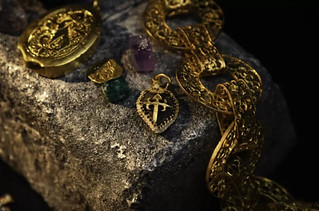 Experts thought the 17th-century Spanish galleon—known as the Nuestra Señora de las Maravillas (meaning "Our Lady of Wonders")—had been "salvaged into oblivion", Sean Kingsley, editor-in-chief of Wreckwatch magazine, told Newsweek.
Experts thought the 17th-century Spanish galleon—known as the Nuestra Señora de las Maravillas (meaning "Our Lady of Wonders")—had been "salvaged into oblivion", Sean Kingsley, editor-in-chief of Wreckwatch magazine, told Newsweek.
But four years of underwater archaeology conducted by Allen Exploration (AllenX) has painstakingly mapped the heavily scattered wreckage of the 891-ton galleon. The team identified different parts of the ship, as well as thousands of artifacts, including silver ingots, emeralds and amethysts.
The Maravillas sank late at night on January 4, 1656, in the northern Bahamas as it was heading home to Cádiz, southwestern Spain, with around 650 people on board—most of whom perished.
To read the complete article, see:
Divers Discover Fresh Riches From Sunken Treasure Ship Thought Picked Clean
(https://www.newsweek.com/divers-discover-fresh-riches-sunken-treasure-ship-thought-picked-clean-1848649)
An article by Australia's Andrew Crellin of Sterling and Currency discusses strategic collecting - getting in front of an emerging coin market. Who doesn't wish they'd stockpiled Chinese rarities when they were selling for 3 and 4 figures vs. 5 and 6? What are the next areas of growth in world numismatics? -Editor
The world numismatic market has seen several truly major moves in the coins of different nations and societies over the last 40 years or so. There was a time when British coins were not in particularly keen demand, so his clients acquired a wide range of historic gold and silver coins - proofs, patterns, hammered and milled. That market exploded in the early 2000's, and has gone from strength to strength since then.
Japanese coins had an incredible surge in the late 1980's; values of Chinese coins have obviously surged over the past 20 years - not just historic coins, but rare modern coins also.
The market for rare Indian coins - Zodiacal gold coins; silver and gold coins from the Mughal era; rarities from British India have all risen strongly over the past several decades.
I've had some minor activity in each of the above areas over the years, so I can only imagine just how satisfying it would have been to have taken the time to really learn about just one of those areas and then build a collection that had risen in value exponentially since it had been put together.
To read the complete article, see:
A Proposed Collecting Theme - Getting In Front of an Emerging Market
(https://www.sterlingcurrency.com.au/blog/news-research/world-numismatics/a-collection-based-on-an-emerging-market-boom-time/)
Here's a great gift idea for the bibliophiles in your circle. -Editor
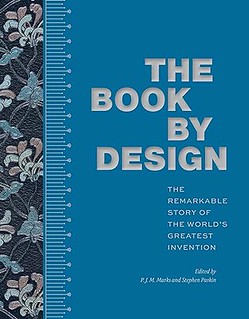 If you're shopping for the bibliophile on your list this holiday season (or you are said bibliophile), look no further! The Book by Design: The Remarkable Story of the World's Greatest Invention (2023, University of Chicago Press) is an ambitious compendium that seeks to catalog and analyze the history of the book in myriad forms — from illuminated manuscripts to the illuminated screen of your Kindle; from scrolls to scrolling.
If you're shopping for the bibliophile on your list this holiday season (or you are said bibliophile), look no further! The Book by Design: The Remarkable Story of the World's Greatest Invention (2023, University of Chicago Press) is an ambitious compendium that seeks to catalog and analyze the history of the book in myriad forms — from illuminated manuscripts to the illuminated screen of your Kindle; from scrolls to scrolling.
Along the way, the book explores standouts from the British Library's collection of historic manuscripts dating back to the 7th century and spanning millennia of international human effort and innovation in book form. Edited by P.J.M. Marks, curator of bookbindings at the British Library, and Stephen Parkin, curator of the library's printed heritage collections spanning 1450 to 1600, each chapter by an individual author is dedicated to an important or iconic work in the history of bookmaking.
To read the complete article, see:
A History of Bookmaking, From Scrolls to Scrolling
(https://hyperallergic.com/857703/a-history-of-bookmaking-from-scrolls-to-scrolling-book-by-design/)
I hope she had some condiments in her basket - this Florida woman tried eating the fake cash she was caught passing. -Editor
According to police, a North Miami Beach woman caught trying to use counterfeit money to pay for items at a Walmart Supercenter made an unsuccessful attempt at disposing the evidence Sunday — by eating it.
An arrest report from the Miami-Dade Police Department states that at around 10:20 a.m., Zipporah Abraham tried passing off the fake bills to customer service staff at the chain's location at 1425 NE 163rd St., leading workers to alert the store's loss prevention officers.
To read the complete article, see:
Woman tries eating counterfeit bills as cops arrest her at Miami-Dade Walmart, police say
(https://www.local10.com/news/local/2023/11/27/woman-tries-eating-counterfeit-bills-as-cops-arrest-her-at-miami-dade-walmart-police-say/)
COIN MAGICIAN NICOLE CARDOZA
The New York Times published an article profiling magician Nicole Cardoza, who specializes in coin magic. -Editor
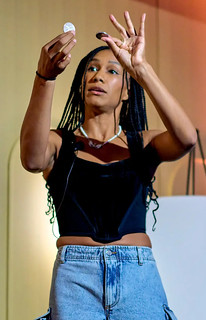 For now, though, being a woman in magic can be a lonely pursuit. Take Nicole Cardoza, who often says she is the
For now, though, being a woman in magic can be a lonely pursuit. Take Nicole Cardoza, who often says she is the only Black female magician I know.
Ms. Cardoza, 34, who specializes in coin magic, or coin production, has been touring the country for more than two years, performing at universities, churches and conferences. Onstage, she is equal parts storyteller, teacher and magician in shows that reference and evoke Ellen Armstrong, who is believed to be the first Black woman to have a touring magic show in the 1900s.
As she pulled one coin and then another out of thin air during a performance at a church in Brooklyn earlier this year, she told the audience, Sometimes we need to believe in things before we can see them.
It's up to us to cultivate this practice to reach out, feel something right between the tips of our fingers — and make it real,
she said, suddenly conjuring a third coin.
When Anna DeGuzman introduced herself at an audition for America's Got Talent,
in a performance that has been viewed more than 57 million times on TikTok since it aired in June, the actress and judge Sofia Vergara asked, How is it that there's not many women that are magicians?
I'm one of the few and I hope to inspire more girls tonight,
Ms. DeGuzman said.
She incorporates cardistry, or the art of card flourishing, into her magic, aiming to revive interest in a skill that Ms. Blackstone described as a ballet of cards.
To read the complete article, see:
Being a Woman in Magic May be the Hardest Trick of All
(https://www.nytimes.com/2023/12/02/style/female-magicians-diversity.html)


